ProAgri


Zambia drought declared a state of national disaster p 14 Zambia
Increase in rabies outbreaks among Namibian kudus p 35 Namibia
Seed under siege p 51 p 27 Zimbabwe Botswana
Poor pastures threaten Zimbabwean farmers
Invest in your future, invest in Jupidex equipment
www.agri4all.com www.proagri.co.za Free
No 98
AFRICA
technology for the farmer

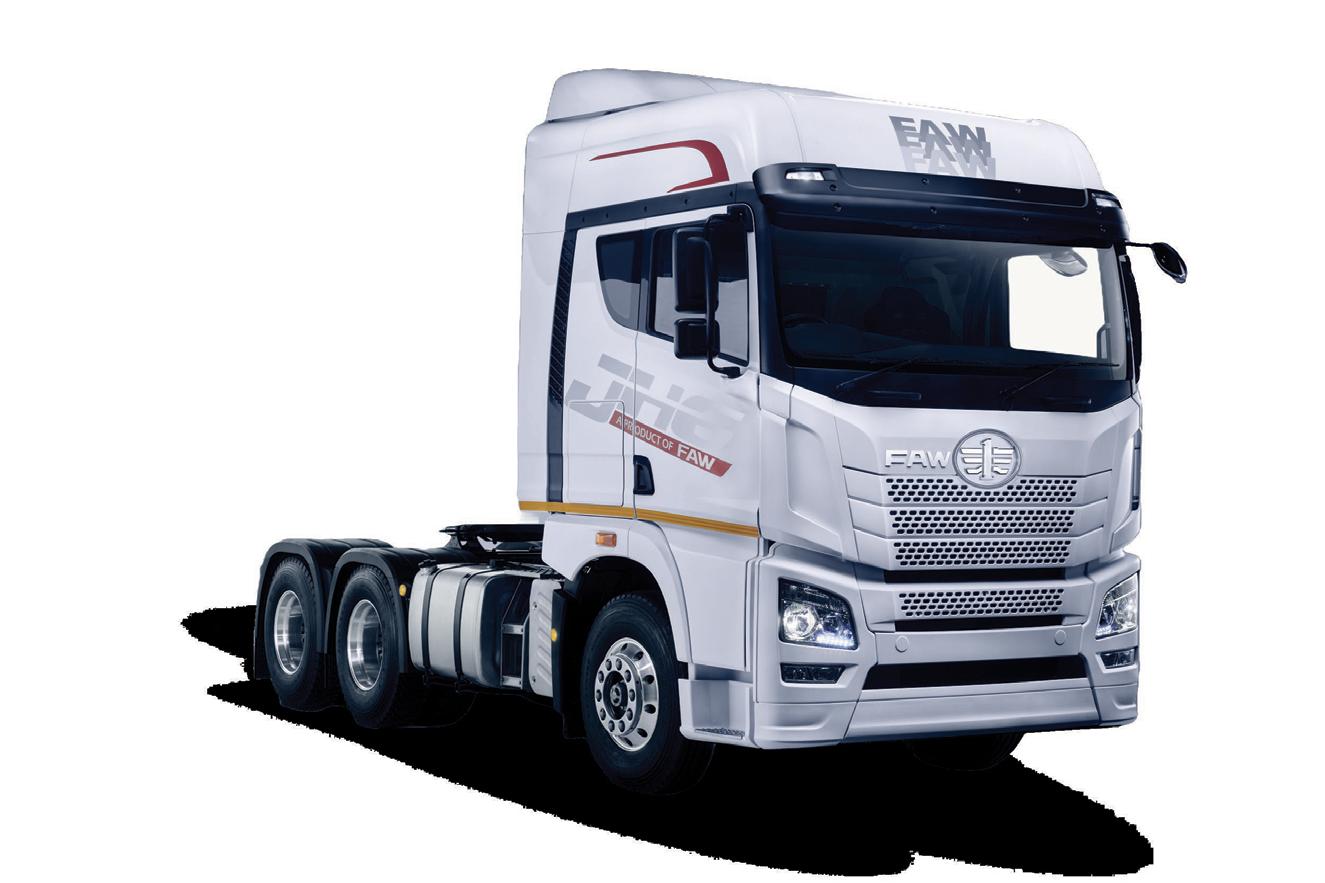




THE ULTIMATE HEAVY-DUTY TRUCK JH6 28.500FT SCAN THE QR CODE TO CONTACT US Head office: 45 Brabazon Road, Isando Gauteng I marketing@faw.co.za Ts & Cs apply www.faw.co.za driving capability Double Coin RR202 shallow longitudinal tyres - ensure extended life of the tyre tread LED daytime running lights
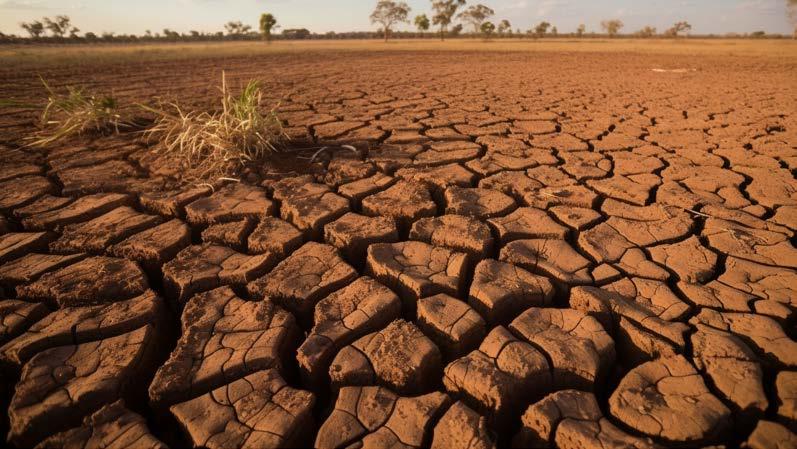
Iwish I knew exactly what to say to encourage farmers who are facing a failed harvest because of the drought, who have had to choose which of their crops they will save, and which they will have to watch wither away, and those who have no idea where the feed, or the money to feed their animals, will come from this year.
Some areas in Africa are experiencing the driest conditions recorded since 1981 and still we are stuck with the question: What is the reason behind it all? We all know the impacts are compounded by increases in staple food prices, inflation, and low demand for agricultural labour, further worsening families’ ability to buy food. Malnutrition rates also remain high across Africa and could worsen if no immediate action is taken.
Almost as painful is the hopelessness you are left with after hearing the rumble of thunder, and seeing clouds gather over your farm, only for them to be blown away before they could release a single drop of water.
I certainly do not want to sit here in my office and tell those out there struggling on their farms not to lose hope. However, I would like to say only this: To those farmers where drought prevails and who continue to suffer its savagery, I am waiting patiently with you for this deathly silence to end. Let us support each other how and where we can.
The ProAgri team remains committed to our farmers, providing you with informative information, guidelines, and advice from experts on how to improve



your farming operation. We are also excited to announce the merging of our Africa magazines, where you can now find all the African related stories that we cover in one edition. We will focus on our four main distribution countries, Zambia, Botswana, Namibia and Zimbabwe, but we shall now be able to cover even more stories in more African countries.
We are also very excited about attending the Agritech Expo in Zambia from 18 to 20 April 2024 at the GART Research Centre in Chisamba, Zambia.
According to the organisers, participants will be able to meet representatives from the full range of the global and African agriculture industry such as small-scale and emerging farmers, large-scale farmers, local and international investors, distributors and agents, commodity dealers and traders, trade associations, local and international industry experts and suppliers, government officials and ministers, consultants and more.
More than 19 000 visitors will descend on the AgriTech Expo Zambia, one of the largest and most professionally attended agri-trade fairs in sub-Saharan Africa. We look forward to meeting you there and covering some exciting new stories.
Cover
Jupidex's roots are firmly established in the agricultural industry, and the company is dedicated to farmers who grow food to feed Africa. Read more about their wide range of specialised equipment for African farmers on page 2.

Editor
Bianca Henning >
Reporters
Benine Ackermann >
Maryna Steyn >
Natasha Pretorius
Ashleigh Schubert
+27 82-326-2572
bianca@proagri.co.za
+27 73-105-6938
benine@proagri.co.za
+27 82-261-9177
maryna@proagri.co.za
+27 71-585-9422
natasha@proagri.co.za
+27 71-585-9422
ashleigh@proagri.co.za
Specialist Writer
Annemarie Bremner >
+27 82-320-3642
ProAgri greetings, Bianca Henning bianca@proagri.co.za

Zambian and African farmers depend on Jupidex equipment
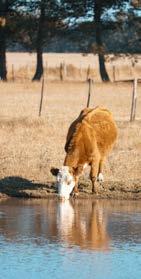

FAW Trucks picks up speed in 2024: Achievements, expansion, and enhanced support.
Theileriosis: Southern Africa on alert after breakout in Zimbabwe
SARO Agro: Revolutionising agriculture and infrastructure development
AGRA: Agribusinesses need support to navigate the “triple crisis”
Drought strikes, Zambia adjusts!
Technews: The latest in agricultural technology from around the world
Heat stress management in dairy cows
Nature conservation is everyone's responsibility
BSi Steel explains the danger of using low quality steel
Broiler uniformity is money
Seed under siege
Banana production in Africa part 3
Namibia: Rabies in kudu on the rise again
Zimbabwe agriculture mechanisation from Belarus with love
Boars and sows breed hope for aspiring Zimbabwe farmers
Small grains may provide big gains for Zimbabwe
Poor pastures threaten Zimbabwe's cattle herd
annemarie@proagri.co.za
Senior Production Manager
Zainab Pandor >
+26 (0)97-769-9786
zainab@proagri.co.za
Client Relations Manager
Carin Swartz >
Marketing Manager
Diane Grobler >
Marketing
Xander Pieterse >
Johan Swartz >
Tiny Smith >
Lynette van Tonder >
Evette Liebenberg >
Head of Design
Michelle Kruger > Design
Anja Oosthuizen
+27 82-735-4996
carin@proagri.co.za
+27 82-555-6866
diane@proagri.co.za
+27 62-391-6507
xander@proagri.co.za
+27 71-599-9417
johan@proagri.co.za
+27 82-698-3353
tiny@proagri.co.za
+27 74-694-4422
lynette@proagri.co.za
+27 71-891-4441
evette@proagri.co.za
+27 84-416-1780
michelle@proagri.co.za
Jamie-Lee Tromp
+27 73-663-1234
engela@proagri.co.za
+27 79-515-8708
nita@proagri.co.za
+27 84-088-0123
accounts@proagri.co.za
Content
2. 5. 6. 9. 11. 14. 16. 19. 22. 24. 25. 27. 32. 35. 38. 41. 45. 51. 2 5 14 19 27 35
ProAgri Africa 98 1
ProAgri Zambia
Copyright © 2024. All rights reserved. No material, text or photographs may be reproduced, copied or in any other way transmitted without the written consent of the publisher. Opinions expressed are not necessarily those of the publisher or of the editor. We recognise all trademarks and logos as the sole property of their respective owners. ProAgri shall not be liable for any errors or for any actions in reliance thereon. No. 10 Tito Road Rhodespark, Lusaka +26 (0)97-769-9786 www.proagri.co.za ProAgri ProAgri technology for the farmer Zambia
subscription
Volmer-van Zyl >
>
Manager
Enquiries Engela Botha > Distribution and
Nita
Accounts Ronel Schluter
Business
George Grobler
Farmers are faced with the harsh challenges of climate change
Zambian and other African farmers depend on Jupidex equipment
by Bianca Henning
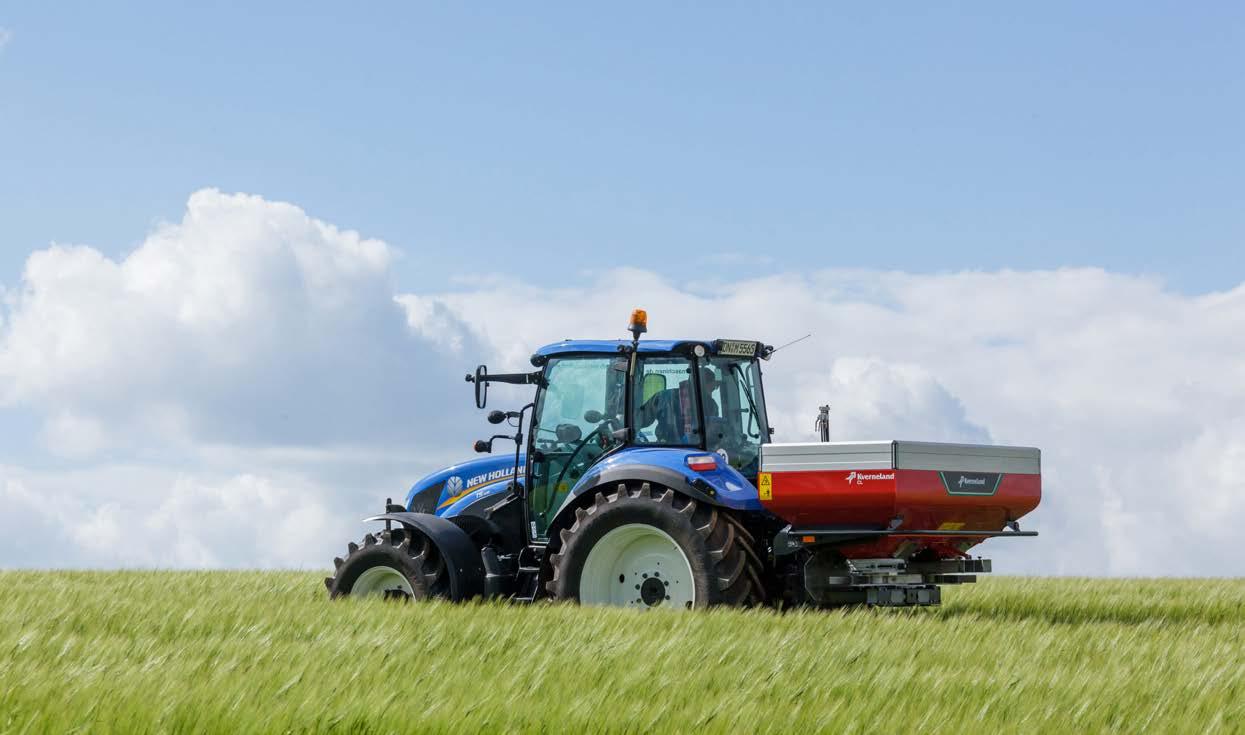
J
upidex's roots are firmly established in the agricultural industry and dedicated to farmers who grow food to feed Africa.
Their vision is to be the leading supplier of affordable, top-quality agricultural equipment to African farmers.
Jupidex is a market leader in the supply, distribution and maintenance of haymaking and forage equipment, soil tillage equipment, planting, spreading, and spraying equipment.
Although Jupidex’s roots are based in South Africa, the group’s activities extend deep into Africa including Zambia, Botswana, Zimbabwe, Kenya, and Uganda. They pride themselves in providing sustainable agricultural solutions to farmers, and can supply the entire range to the agricultural community across the continent.
Jupidex's range of tried and tested equipment
McHale hay equipment
Jupidex has a wide range of hay and forage equipment and pride themselves in their high-quality and durable balers. Over the last decade, the McHale range of balers has been operating in more than five continents in some of the world’s most difficult conditions. McHale balers have a reputation for providing high output, excellent reliability, operator comfort and top resale value. McHale is no unknown name in the agricultural industry. Their flagship baler is the F5400 Non-Chopper Fixed Chamber Baler.

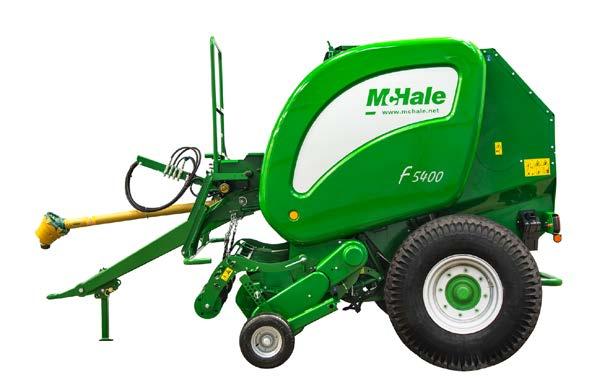
The F5400 NonChopper Fixed Chamber Baler is synonymous with high output, excellent reliability, operator comfort and top resale value. This semi-automatic baler is equipped with components that ensure longevity. The drop floor unblocking system keeps your machine blockage free. The rugged machine can handle tough crops and conditions with its 13.5/7.5/430.9 tyres. It efficiently moves crops from the pick-up to the bale chamber by using the star-shaped feed rotor.
The bale chamber on the McHale F5400 has 18 heavy duty rollers. It measures 1,23 m x 1,25 m.
This baler has maximum output and performance. There is a continuous oiling system as well as central grease blocks to keep all your moving parts lubricated with minimum effort from the operator. This baler makes magic with the Wizard Control Console.
After extensive testing and market research, McHale decided to offer customers the choice of two pick-up options depending on their working conditions. The F5400 baler offers the option of either a cam pick-up or a camless pick-up. This baler has a pick-up of 2,1 m.

The cam pick-up has a 2,1 metre high-intake galvanised pick-up which ensures excellent ground cleaning in all types of crops.

A 2,1-metre camless pick-up is available as an option on all McHale fixed chamber balers.
2 ProAgri Africa 98
The F5400 NonChopper Fixed Chamber Baler.

Kverneland spreading equipment
The Kverneland Exacta CL mounted spreader is your all-in-one machine: medium in size but high in productivity! If you are looking for high performance, intelligent output, and easy adjustments, look no further. This spreader is equipped to spread precisely regardless of the weather conditions and has no impact, no fragmentation and no dust, achieved through the central release point. This disc spreader has a hopper capacity between 1 100 and 2 000 litres and comes with the CentreFlow system, which can spread up to 28 metres, as standard.
It has 8 vanes per disc for the same spreading quality as the bigger disc spreaders. This helps with equal distribution, accuracy and symmetrical spreading.
Although it is medium in size, you can add most of the accessories that the larger spreaders have, like aluminium hopper extensions, ExactLine for border spreading, parking frame or LED lights. Furthermore, this spreader can be operated either hydraulically or electrically.
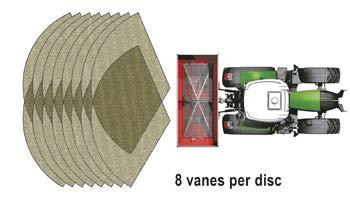
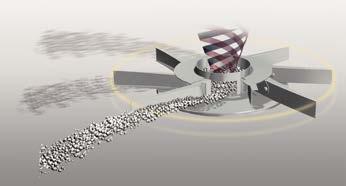
For an accurate spreading pattern, the Exacta CL mounted spreader ensures continuous fertiliser flow with the 8 vanes per disc.
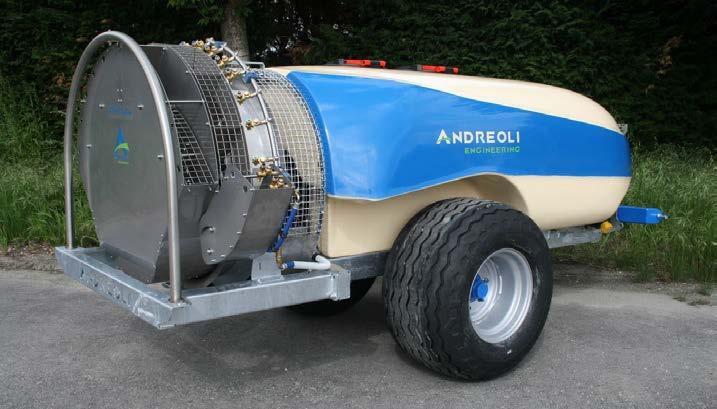
Andreoli spraying equipment
If you are looking for a sprayer to manage chemical application in orchards, the Andreoli ECO VAC trailed series is the way to go. These blowers are fit for a lifetime of professional use as they are fully covered in stainless steel. The large front suction opening ensures that you always have a clean application, and the air-correction system makes sure that you have an even and symmetrical application. It also has a strong penetration into the vegetation in order to withstand wind resistance.
The ECO VAC range consists of the VAC 896 (for vineyards, fruit and nut orchards) and the VAC 997 (for avocados, walnuts and fruit orchards with dense vegetation). In the VAC 896 you can choose between VAC 896 Kiwi, VAC 896 Mini Target, and VAC 896 Target. The VAC 997 has the standard version as well as the VAC 997 Mini Target. Specifications for all the different models can be found on the Jupidex website: https://jupidex. co.za/product/andreoli-eco-vac/
RDO Equipment Zambia stocks all the Jupidex equipment you need
RDO Equipment is the proud dealership of Jupidex equipment in Zambia. They use their global dealer network to import equipment and parts to help local customers maintain and cultivate their land. Jupidex parts are readily available at RDO Equipment Zambia. Visit them in Zambia at Farm 2297a, Great North Road, Kabwe.
For more information on Jupidex products, contact Philip Janse van Rensburg on (+27)72-2492995, or send an e-mail to philip. jansevanrensburg@jupidex. co.za. Also visit the Jupidex website at www.jupidex.co.za, and RDO’s website at www.rdoequipment.com.zm.

ProAgri Africa 98 3
The popular McHale F5400 round baler.
The Andreoli ECO VAC is the series of trailed sprayers for the professional management of chemical application in all types of orchards.






Head office: 45 Brabazon Road, Isando Gauteng I marketing@faw.co.za





FAW Trucks picks up speed in 2024 : Achievements, expansion, and enhanced support
F AW Trucks South Africa, a key player in the global commercial vehicle manufacturing arena, reflects on a successful 2023 and charts an ambitious course for 2024 with strategic plans to reinforce its market presence and customer support.
1. Impressive 2023 performance: Leading the pack
At the close of 2023, FAW Trucks SA secured a notable milestone by clinching the 1st position in the market, culminating in 3 797 sales. This achievement places the company ahead of other market-leading European brands. FAW Trucks SA proudly stands as one of the leading players, showcasing its commitment to delivering high-performance and reliable trucks.
2. Appointment of new dealers: Expanding across borders
In line with our commitment to enhancing customer support, FAW Trucks SA is embarking on an extensive expansion of its dealer network, not only within South Africa but also in other cross-border African regions. The brand aims to provide high-level representation both in the local South African market, and through the appointment of new dealers, in various other African regions.
3. Upgrading dealerships and new corporate image agenda
FAW Trucks SA has exciting plans for the visual representation of its brand. The company is set to roll out a new corporate image agenda, reflecting the esteemed standing of the brand on a global scale. This initiative aims to enhance the overall dealership experience, aligning with FAW's commitment to providing excellence in every aspect of its operations.
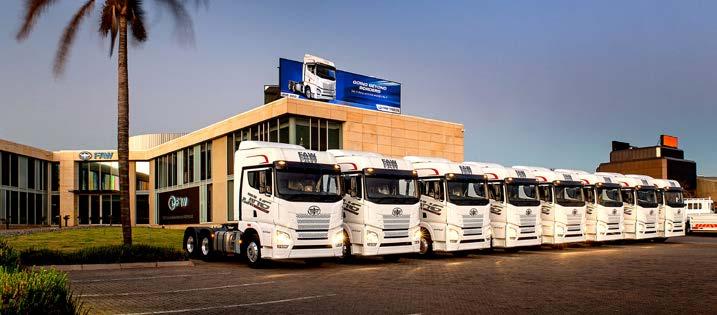
4. 2024 plans of support: Launching
CRM support department
Looking ahead to 2024, FAW is gearing up to launch its new Customer Relationship Management (CRM) Support Department. This department is poised to elevate the aftersales assistance provided throughout the entire local and cross border network. The introduction of the CRM Support Department underlines FAW's dedication to ensuring a seamless and comprehensive customer experience.
Mr Jian Yang, CEO of FAW Trucks SA, expressed excitement about the company's achievements and future plans, stating, "We are proud of our exceptional performance in 2023, and as we step into 2024, our commitment to excellence remains unwavering. The expansion of our dealer network, the upgrade of our dealerships, and the launch of the CRM Support Department are all indicative of our dedication to providing unparalleled service and support to our valued customers."
With over six decades of commercial vehicle excellence, FAW Trucks SA has emerged as an award-winning industry

leader. The Global OEM has been recognised as “Best Truck Fleet Management Solution” for three consecutive years – a testament to its customer-focused approach and continuous innovation. As one of the most established names in heavy transport, spanning over 70 years globally, FAW Trucks SA remains committed to shaping the future of mobility through cutting-edge manufacturing and a collaborative spirit that places partners and clients first.
We look forward to continuing our journey of strategic growth and service to businesses across Southern Africa.
About FAW Vehicle Manufacturers SA (Pty) Ltd
FAW Vehicle Manufacturers SA (PTY) Ltd, established in 1994, is a leading global player in commercial vehicle manufacturing, committed to delivering cutting-edge solutions. With over 70 years of experience and one of the only OEMs to have such a diverse and extensive range from small to extra heavy vehicles, FAW Trucks SA continues to be a trusted partner for businesses worldwide.

To explore FAW’s commercial offerings and stay updated on the latest developments, visit www.faw.co.za.
ProAgri Africa 98 5
Theileriosis:
Southern Africa on alert after breakout in Zimbabwe
 by Tisha Steyn
by Tisha Steyn
The Zimbabwe veterinary services have confirmed an outbreak of Theileriosis throughout the country.
January disease
In Africa, this disease, also known as January disease, is caused by the cattle-adapted Theileria parva, which is transmitted by brown ear ticks (Rhipicephalus appendiculatus).
Another similar disease which is caused by buffalo-adapted Theileria parva, is known as E ast Coast Fever and Corridor or Buffalo disease. Although buffalo is mildly affected by the latter, it is usually deadly in cattle.
The South African Department of Agriculture, Land Reform and Rural Development consequently issued a warning to South African farmers to be on the alert for early symptoms of the disease. The occurrenc e of the diseases coincides with the breeding of brown ear ticks during the summer rainfall season, with a heightened r isk from December to May in South Africa.
No outbreaks of the cattle-adapted strains of Theileria parva, have occurred in South Africa since the early 1950’s, when it was eradicated. South Africa remains free of both forms of the disease, hence the caution to prevent it from being re-introduced into the country where both forms are reportable animal diseases.
At present, South Africa is free of Theileriosis, but cattle smuggled over the border with Zimbabwe may change that status.
East Coast fever
The disease was first reported in Southern Africa south of the Zambezi River in 1902. It was named East Coast fever after it was determined that the disease had originated in cattle imported from the East Coast of Africa to other African countries.
It is therefore of major economic importance to cattle farmers in Africa, where it occurs in Tanzania, from where it spread to South Africa, Zimbabwe, Zambia, Mozambique, Malawi, Burundi, Rwanda, Uganda, the Democratic Republic of Congo, Kenya, and South Sudan. It was even introduced to the Comoros by cattle imported from Tanzania.
Symptoms
The most certain signs include a very high fever and the enlarged lymph nodes near the tick bite sites on the animal. This area is mostly restricted to the ears and in the immediate area around the ears, hence the name brown ear tick.
Other symptoms include lethargy, a loss of appetite, which leads to loss of condition and a reduction in milk production. Also, there may be a nasal discharge, opaque cornea, diarrhoea, pulmonary oedema, and anaemia.
Checklist of symptoms
In T. parva infection, there is a decrease in white blood cells.
The first sign is an enlargement of lymph nodes draining the site of tick feeding. All the lymph glands become swollen.
Fever commences one to four days later, and the temperature quickly rises to 40 ° Celsius. The fever remains high until death.
The animal appears listless, loses appetite and condition, and milk production is reduced.
Respiration is fast and the animal may have a brief bout of coughing. There may initially be constipation, but after a few days of fever, diarrhoea is present.
The faec es contain blood and is coated in bloody mucous.
The eyes have a watery discharge and, in some animals, sensitivity to light may occur and the cornea may appear opaque.
A subacute form occurs in calves born of immune cows in an area where the disease is endemic. The clinical signs are the same as in the acute form but not as pronounced, and recovery is better.
Confirmation of diagnosis
If the disease is suspected, it is most important to immediately contact a state or private veterinarian to take smears to identify the parasite. The diagnostic process of theileriosis consists
6 ProAgri Africa 98 Zambia

Indigenous cattle are more resilient to Theileriosis. (Source: Pixabay)
of clinical signs, a blood smear examination, lymph node biopsy, histopathological examination, and serological tests. Post mortem findings mainly include damage to the lymph and respiratory systems.
Incubation
The parasite spreads quickly and aggressively; the incubation period lasts around ten to 25 days, with death as quickly as eighteen to thirty days after the initial tick infestation. According to some sources, the development of the disease is even more rapidly, with the incubation period from eight to twelve days, and the disease lasts for ten to nineteen days before the animal dies. Mortalities can be up to 100%. Cattle endemic to the regions where the parasite occurs can be given medication and will survive to various degrees. If they survive, they become carriers.
Life cycle of Theileria
The Theileria parasite passes through three distinct stages in its life cycle. The first stage occurs in the ticks, the second in the host when it is bitten by an infective tick during feeding on the animal’s blood, and the third stage takes place when the parasite is ingested by the larval and nymphal ticks and blood while feeding on infected animals. When the ticks feed on another animal, the parasite is transferred.
Treatment
There are different treatments with varying efficiency. The ultimate cause of death is pulmonary oedema. In 2010, a vaccine to protect cattle against East Coast fever was approved and registered by the governments of Kenya, Malawi, and Tanzania.
Prevention and control
The disease can be controlled by controlling the ticks on cattle with pesticides applied in dip baths or spray races, and by using indigenous cattle breeds that can acquire immune resistance to the vector ticks.
Checklist of preventive measures
The reintroduction of January disease and or East Coast Disease could have a devastating effect on livestock and farmers.
The management, control and or eradication of this disease require highly intensive and expensive efforts that are difficult to sustain. To help prevent Theileria spp from recurring, the following is important:
Herd health management
Use of preventative vaccination
Control of ticks
Since brown ear ticks act as a vector, it is necessary to keep animals in tickfree surroundings.
Systemic dipping and rotation of grazing land will help.
Should there be a disease suspicion, frequent acaricide application must be started immediately (at least three times within two weeks).
• A regular treatment of cattle with suitable acaricide during the period when first stages of ticks occur.
• Effective treatment with acaricide every twelve days will prevent the development of nymphs and kill all stages.
• Where host ticks are involved, five to seven days of treatment will prevent engorgement. A highly volatile acaricide should be used for spraying buildings to reach ticks hidden in cracks or crevices.
• All grass and boulders where ticks may hide must also be removed.
Control of movement
No other animals should have access to pasture or water reservoirs used for indigenous stock.
Animal health when suspecting infection
• Recording of temperature at regular intervals.
• Examination of temperature, blood count and lymph nodes of suspected animals.
Status of Theileriosis in South Africa
South Africa has not imported any live cattle from Zimbabwe for many years and enforced import requirements for other risk commodities, like hides and hay, requiring t hat these must be free of ticks. However, factors such as illegal importation (smuggling) of cattle, or inadvertent introduction of infected ticks via people, hay, hides, or cars crossing the border into South Africa, may still pose a risk
In South Africa, collected samples must immediately be sent to Onder-
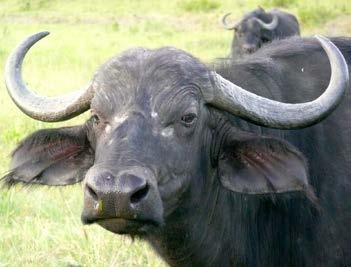
Buffalo-adapted Theileria parva is known as East Coast Fever and Corridor or Buffalo disease. Although buffalo is mildly affected by the latter, it is usually deadly in cattle
stepoort Veterinary Laboratory for testing. Samples must be submitted via the state veterinarian and sample submission forms must be completed in full, including full details about the location, reasons for testing and the history of the case. The Department of Agriculture, Land Reform and Rural Development encourages everyone to practice strict biosecurity measures to reduce the risk of all animal diseases, including not introducing animals of unknown health status into their herds.
Contact Dr Danie Odendaal at 082-454-0532 or Theileriosis https://www.youtube.com/ watch?v=KrrjUgBCRyE.
Beheerde en aanmeldbare dieresiektes. (2018) Landbou.com https://www.landbou.com/landbou/ kundiges/landbou%7ckundiges%7cvravir-faffa/beheerde-en-aanmeldbaredieresiektes-20180411
Concerning disease outbreak in Zimbabwe. (2024) Red Meat Producers Organisation (RPO)
East Coast Fever. (2023) Wikipedia https://en.wikipedia.org/wiki/ East_Coast_fever#:~:text=East%20 Coast%20fever%2C%20also%20 known%20as%20theileriosis%2C%20 is,between%20cattle%20is%20a%20 tick%2C%20Rhipicephalus%20appendiculatus.%20
Kawsar, I. (n.d.) Theileriosis in Cattle: Causes, Signs, Diagnosis, Treatment, and Control. The VetX https://www.thevetexpert.com/theileriosis-in-cattle-causes-signs-diagnosistreatment-and-control/
Theileria. (2023) Wikipedia https://en.wikipedia.org/wiki/Theileria
Theileriosis. (n.d.) World Organisation for Animal Health https://www.woah.org/en/disease/ theileriosis/

ProAgri Africa 98 7



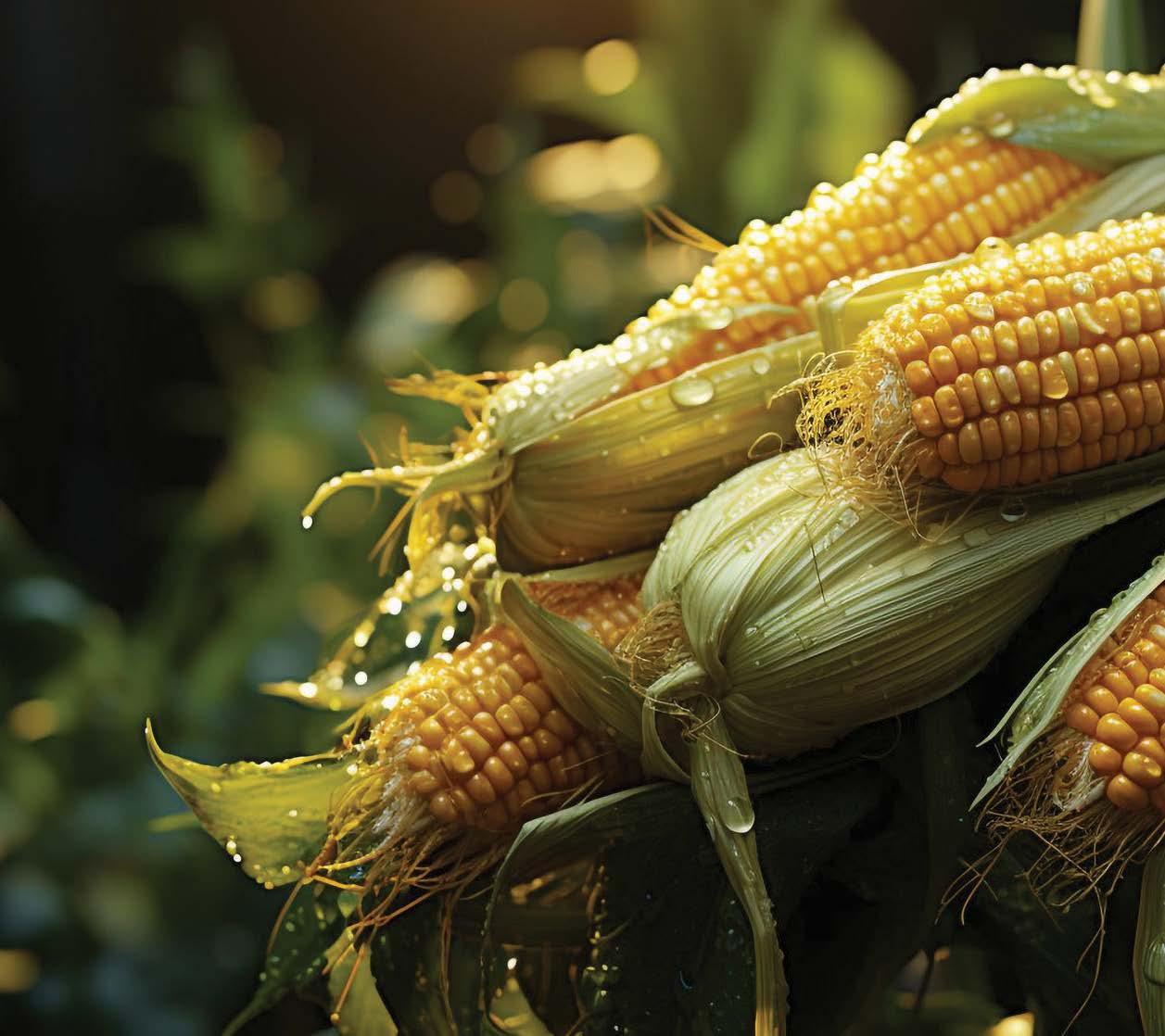







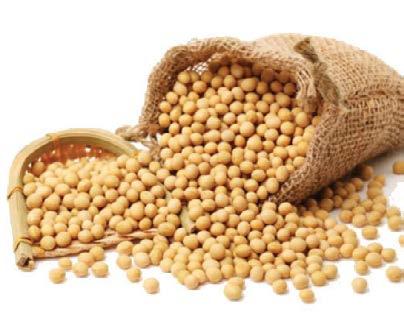


8 ProAgri Africa 98 Hand SEED PLANTER & FERTILIZER PROMOTION K2,723 seeding & soil Lusaka Head Office Plot No. 5284 Buyantanshi Road, Lusaka, P.O. Box 35168, Lusaka (+260) (211) 241477/387001/9 (+260) (211) 846224/846225 saro@saroagri.co.zm Hand Pushed SEED PLANTER & FERTILIZER Machine is suitable for cultivated farm. SPECIAL PROMOTION K2,723 Distribute fertilizer together with seeds One seed one hole or multi seeds one hole Ditching, seeding & soil covering Lusaka Head Office Plot No. 5284 Buyantanshi Road, Lusaka, Zambia P.O. Box 35168, Lusaka (+260) (211) 241477/387001/9 (+260) (211) 846224/846225 saro@saroagri.co.zm Kitwe Branch Plot 4013 Mutentemuko Road, Heavy Industrial Area, Kitwe, P.O.Box 20710, Kitwe, Zambia. (+260) (212) 2107093-4 (+260) 976338866 info-kitwe@saroagri.co.zm Mkushi Branch Plot No. 2345 Mkushi Turn Off, Mkushi, Zambia. P.O.Box 840238, Mkushi, Zambia. (+260) (215) 352569 (+260) (215) 352568 saromkushi@zamtel.co.zm +260 773914996 WhatsApp Us on:
SARO Agro: Revolutionising agriculture and infrastructure development

In the heart of Zambia, SARO Agro stands as a pioneering force, leading the charge in providing farmers and municipal bodies with cutting-edge equipment and solutions to boost productivity and development. Specialising in a wide range of machinery, from tractors and farm equipment to power generators, solar solutions, pumps, and earth-moving equipment, SARO Agro has been a game-changer in Zambia's agricultural and infrastructure sectors.
Mechanisation for the masses
Agriculture has long been the backbone of Zambia's economy, and smallscale farmers play a vital role in this sector. To help these farmers access the machinery they need without the burden of collateral and high interest rates, SARO Agro, in collaboration with AgLeaseCo, has embarked on a groundbreaking project sponsored by the European Union. This project facilitates easy and affordable access to essential agricultural machinery, coupled with comprehensive training to equip farmers with the knowledge needed to operate the equipment efficiently. This initiative is a giant leap forward in promoting mechanisation in the country.
Moreover, SARO Agro has established a partnership with the Public Service


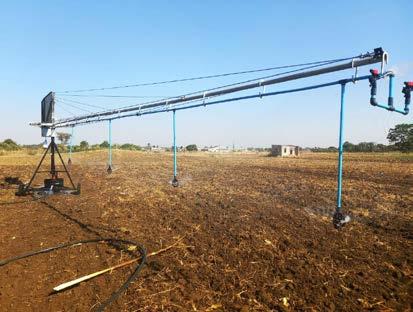
Micro Finance Company (PSMFC) to offer the Public Service Agricultural Asset Plus Loan Scheme. This initiative caters to public service workers, including the Zambia Air Force (ZAF), Zambia National Service (ZNS), Zambia Army, and quasi-government institutions. With attractive loan tenure options of up to 84 months and an incredibly low interest rate of just 9% per annum, SARO Agro is facilitating access to topquality equipment, further boosting agricultural productivity.
Powering progress with generators and solar solutions
Energy is the lifeblood of modern agriculture and infrastructure development. SARO Agro recognises this need and supplies a diverse range of generators to meet various demands. Renowned brands like Kirloskar, CGM, and SAROGEN are part of their impressive lineup, catering to both industrial and domestic requirements. The company has also expanded into providing solar power backup solutions, reinforcing their commitment to sustainable energy.
The recent collaboration between SARO Agro's Genset Department and the Engineering Division resulted in significant enhancements to the CGM 30 KVA and 20 KVA generators. By increasing the tank size from 100 litres to 500 litres, these generators have become ideal for telecoms and other applications, ensuring a remarkable boost in performance and reliability. Moreover, their solar installation project in Mafinga Town Council demonstrates a commitment to clean, green, and reliable power sources. This project showcases a cutting-edge solar system with high-efficiency panels and battery setups, delivering tailor-made solutions to meet clients' specific energy needs.
Pumps and irrigation solutions
Efficient irrigation is a key component of successful farming, especially in regions with irregular rainfall patterns. SARO Agro provides a wide array of irrigation equipment, including manual pumps, submersible pumps, and booster pumps. An impressive addition to their offerings is the Solar Powered Centre Pivot designed by SARO. This innovative solution is designed to cover areas of up to 2,5 hectares and ensures efficient irrigation over a 7-day cycle, making it a perfect fit for emerging and small-scale farmers looking to enhance their crop yields.
Empowering municipal development
SARO Agro is not solely focused on agriculture. They are also instrumental in the development of municipal infrastructure, particularly in the field of earth-moving equipment. By supplying motor graders, TLBs (Tractor-LoaderBackhoes), and roller compactors to various municipal councils through the Constituency Development Fund (CDF), SARO Agro is contributing to the construction and maintenance of roads and other critical infrastructure. Notable beneficiaries of this initiative include Matero Constituency and Chongwe Municipal Council, among many others. The result is tangible progress and development within these communities. SARO Agro's commitment to delivering top-tier equipment, financing options, and sustainable energy solutions sets them apart as a trailblazer in Zambia's agricultural and infrastructure sectors.
As the agricultural landscape evolves and infrastructure demands grow, SARO Agro is ready to lead the way, ushering in a new era of mechanised agriculture and robust development. Their dedication to innovation and excellence continues to shape the future of Zambia's rural and urban landscapes.

Article supplied ProAgri Africa 98 9



Drought? No problem!
How can Biocult® Seed Application help your crop perform with 30% less water?
• Mycorrhizae in Biocult® act as a secondary root system by enlarging the roots’ absorption surface area.
• Biocult® stimulates root development which increases the capabilities to absorb larger quantities of water.
• Mycorrhizae in Biocult® reach into micropores where plant roots can’t access water.
• Mycorrhizae improve soil structure for better water infiltration and water retention.
• Mycorrhizae assist the plant in developing osmolytes which protect cells during time of stress.

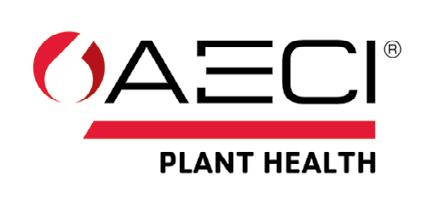
10
Tsumeb (067) 222 011 Grootfontein (067) 248 500 Hardap (063) 240 897 Stampriet (063) 260 046 Agents: Wimpie Coetzee - 081 128 0268 Felix Nell - 081 316 9916 Johan Pieterse - 081 712 3015
AGRA report: Agribusinesses need support to navigate the “triple crisis”
Distributed by APO Group on behalf of AGRA
A GRA (formerly known as the Alliance for Green Revolution in Africa) has released the third edition of the ‘African Agribusiness Outlook Report’ which sheds light on the impact of the so-called “triple crisis” (COVID-19 pandemic, climate change, and the Russia-Ukraine conflict) on small and medium-sized agribusinesses in Nigeria, Zambia, and Tanzania.
The report, which is jointly produced by AGRA and IPSOS (a market research company), surveyed 1 623 small and agribusinesses in the rice, maize, and tomato value chains in Nigeria, Zambia and Tanzania, and the soya bean, maize, and tomato value chains in Zambia.
The study examined the impact of various measures taken to support Small and Medium Enterprises’ (SMEs’) performance during the triple crisis, revealing that a substantial proportion of agribusinesses have experienced severe declines in revenue during this period, with only some managing to recover.
The report states: “Agribusinesses in agricultural value chains in Nigeria, Tanzania, and Zambia, have been hard hit by the “triple crisis” of COVID-19, climate change, and the Russia-Ukraine conflict. Although the larger businesses were hardest hit in Nigeria and Zambia in 2020, these businesses appear to have been better able to recover towards 2023.
While supply, demand, and operational costs were significant challenges during the peak of the COVID-19 pandemic, the report reveals that businesses continue to grapple with soaring operational expenses in the wake of climate-related impacts and the ongoing conflict in Ukraine. The report discloses that 58% of SMEs surveyed have experienced substantial revenue declines of 20% or more throughout the “triple crisis” period. Furthermore, the report reveals
Dr Agnes Kalibata, President of AGRA explains the findings in their report on agribusiness in three African countries.
some of the strategies employed by businesses to stay afloat during these challenging times including injecting additional capital, cost reduction measures, and streamlining their product lines.
Dr Agnes Kalibata, President of AGRA, noted that agribusinesses have exhibited remarkable adaptability, innovation, and determination, on the one hand, but continue to struggle amidst business disruptions through lockdowns, supply chain disruptions, productivity decreases, and reduced consumer demand.
Dr Kalibata remarked: “We are all aware of the challenges they are facing, however not much has been done to look at the cumulative impact of the triple crisis and the specifics of severity that the agribusinesses are grappling with. As we reflect on the impact of the triple crisis on agribusinesses in Africa, we must also recognise the incredible potential these enterprises possess.”
She noted that as drivers of farmer resilience, job creation, economic development, and poverty alleviation, African agribusinesses hold the promise of fostering greater social inclusion and reducing inequality across the continent.
“There is an urgent need for measures to effectively address and alleviate the impacts of these crises on the sector that serves as the primary



ProAgri Africa 98

ROTOTANK Material Approved By the Food and Drug Administration for Drinking Water
Hereby confirms that all base polymers are sourced from Sasol Polymers. These grades all conform to Food and Drug Administration (FDA section 177.1520-31a).
All ROTOTANK rotational moulding grades conform to FDA regulations and International potable water and food contact regulations. We confirm that no recycled polymers are used in the production of these grades.
Available in various colours.








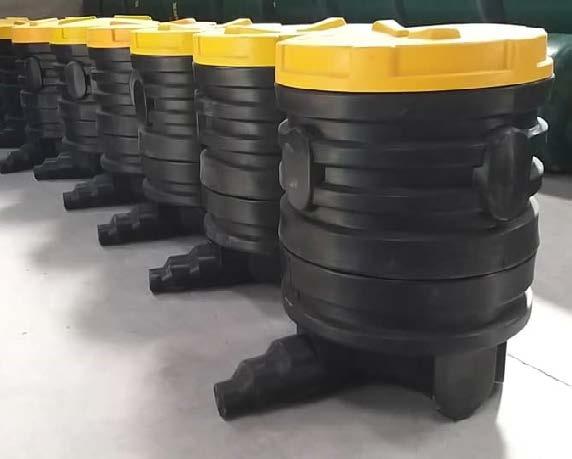
12 ProAgri Africa 98 Zambia
“FIRST”
Easy to install | Fits all pipe sizes Height adjustable | No rust Easy access to pipe intersections and valves sales@rototankzambia.com 0960 567 058 / 0971 926 953 www.facebook.com/RototankZambia
HEALTH COMES
Plastic manholes and covers for sewerage and communication CUSTOMER
employer, engaging over 70 percent of Africa’s population in economic activities and contributing more than 30 percent to the continent’s economies,” she emphasised.
The report calls for more collaboration between policymakers, financial institutions, and development organisations to provide supportive ecosystems that empower the agribusinesses and respond to their three top tasks: access to affordable finance, fostering a business-enabling environment particularly with stable and predictable policies, and supporting an effective regional trade system.

The report recommends more focused, tailored, and concerted investment and support to improve quality and quantity of produce at the farmer level. It recommends the adoption of policies that encourage the development of financial products specifically tailored to the agricultural sector and improving financial policies to enhance access to affordable credit.
To optimise the efficiency of SMEs and reduce transaction costs, there is a call for improved market information. Enhancing information services related to supply and demand is vital, as it can facilitate better decision-making for agribusinesses. It notes that a wellinformed market will lead to improved supply efficiency. The report calls upon governments to reduce fuel costs,

mitigate currency fluctuations, ensure timely fertiliser subsidies, streamline business registration processes, and efficiently manage storage facilities.
Summary of key findings
Extent of revenue drops:
• In Nigeria, 51% of SMEs reported a decline in revenue since the 2019 COVID-19 outbreak.
• In Tanzania, 44% of SMEs experienced a drop in revenue.
• In Zambia, 21% of SMEs reported a decline in their revenue.
Impact of the crisis on different sectors and business sizes:
• In Nigeria, maize was the hardesthit crop in 2020. Medium-sized businesses were affected the most but recovered faster than smaller businesses.
• In Tanzania, maize was also the hardest-hit crop and struggled to recover compared to other value chains.
• In Zambia, tomatoes and soya beans were significantly impacted. Tomatoes recovered faster, and medium-sized businesses were hit hardest by Covid-19 but also recovered more quickly.
Impact of climate change:
• Unreliable rainfall is perceived as a
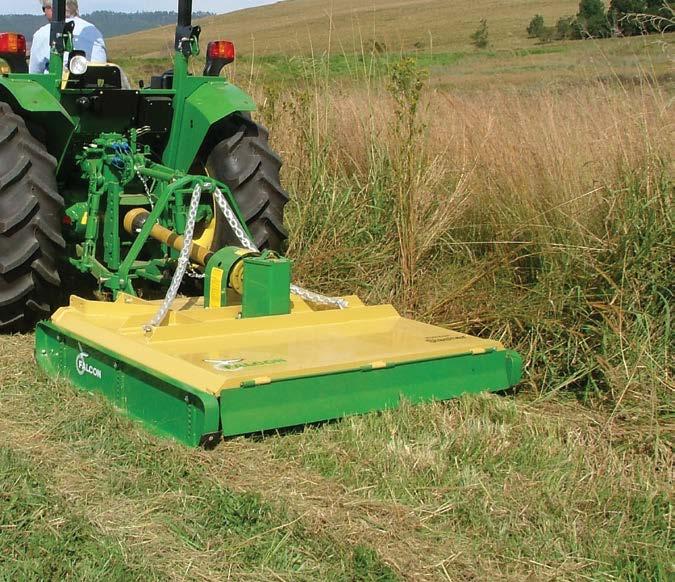
very big problem in Zambia (54%) and Tanzania (62%) but a lower concern in Nigeria (32%).
Causes of revenue decline:
• In Nigeria, the high cost of transport was identified as a leading cause, accounting for 85% of the challenges faced.
• In Tanzania, low profit margins were a significant issue, with 83% of SMEs affected.
• In Zambia, low profit margins also posed a challenge, impacting 77% of businesses.
Strategies to mitigate the revenue decline and financial challenges:
• Capital injection: SMEs in Nigeria injected more capital into their businesses (42%), followed by Zambia (32%) and Tanzania (24%).
• Reduced staff costs: To cut expenses, SMEs in Zambia reduced staff costs (24%), followed by Tanzania (33%) and Nigeria (36%).
• Loan uptake: While loan uptake grew over the past few years, only a minority of SMEs took out loans to cope with the crisis, citing perceived affordability as a barrier. Currently, the highest loan uptake by businesses is Zambia (15%) followed by Nigeria (12%) and Tanzania (10%).



ZA-V – A world of precision Mounted spreader I 1,700 ℓ - 2,000 ℓ I 10 m – 36 m ISOBUS, cell technology (Profis) and border spreading makes it a state-of-the-art fertiliser spreader in its class. F50/150/4 FALCON SLASHER A Falcon Slasher is built to last and is capable of coping with the tough conditions unique to Africa info@falconequipment.co.za | www.falconequipment.co.za Tel: +27 (0) 33 330 4764 All Amazone implements imported by AmaTron 4 ISOBUS terminal For more info scan here. myAMAZONE for more performance www.amazone.net/myAMAZONE for Innovation | amazone.net Falcon_ProAgriAgri4All.indd 1 2023/10/31 09:30
Drought strikes, Zambia adjusts!
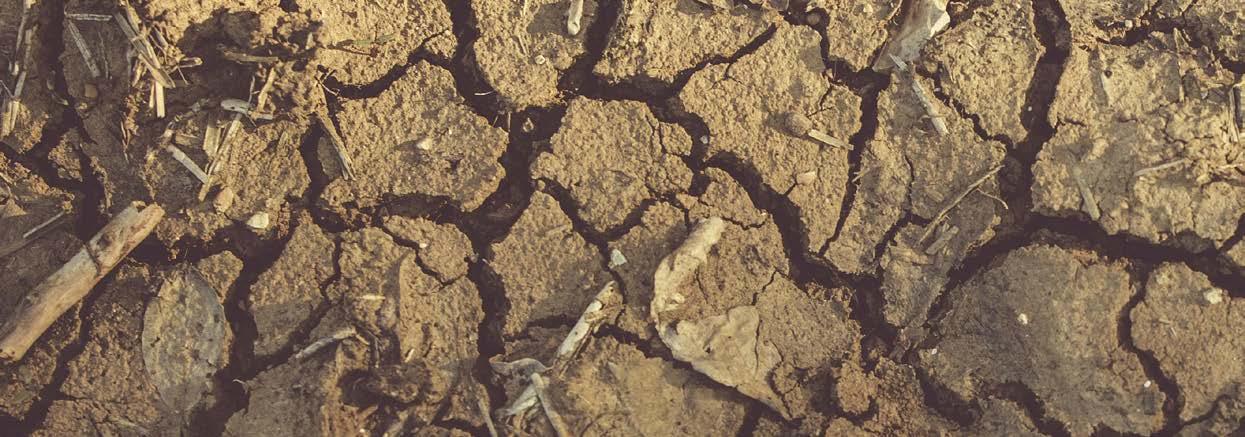 by Ashleigh Schubert
by Ashleigh Schubert
Zambian agriculture is facing trials and tribulations as the drought is becoming worse and rain stays away.
President Hakainde Hichilema has officially declared Zambia as going through a national disaster. He says that the country has had up to five weeks at a time without any rain. This is having a devastating effect on agriculture. President Hichilema says these dry spells are causing an immense amount of destruction.
The majority of Zambia is affected, with 84 of the country’s 116 districts suffering from the drought. This means more than a million households are impacted. Hopes are fading with the drought predicted to last well into March.
Why has Zambia declared a state of national disaster?
A drought is not as simple as a lack of rain or water supply. The safety of the entire country is in danger with the drought affecting food security, water supply, and energy supply. Almost half of the country's planted areas, approximately one million hectares, have already been destroyed, according to President Hichilema.
Since Zambia is a country that uses a lot of hydroelectric power, the crisis also threatens the country’s power supply. Already the energy sector of the country is facing a deficit of between 450 and 500 megawatts.
When a national crisis is declared, it allows the country to release more resources to try and combat the issue. President Hichilema said that in order to address the consequences of the drought more effectively, there will be a realignment of the 2024 national budget to allocate additional resources.
He emphasised that there would be provision of humanitarian aid to prevent hunger, urging collaborative partners to extend relief efforts beyond the distribution of grain. The president also highlighted Zambia's preparedness to import and manage electricity
strategically to sustain economic activities, particularly in the heavily power-dependent mining sector, as Zambia is Africa’s second largest copper producer.
What caused the drought?
El Niño is a climate pattern characterised by warmer than average sea surface temperatures in the central and eastern equatorial Pacific Ocean. This leads to shifts in atmospheric circulation patterns, affecting weather globally. Consequences include altered rainfall patterns, increased temperatures, drought in some regions, and disruptions to marine ecosystems. El Niño typically occurs every two to seven years, lasting for several months, and is part of a natural climate cycle.

The dry spell has been going on for weeks and is not predicted to come to an end anytime soon. (source: Pexels)
14 ProAgri Africa 98
Zambia
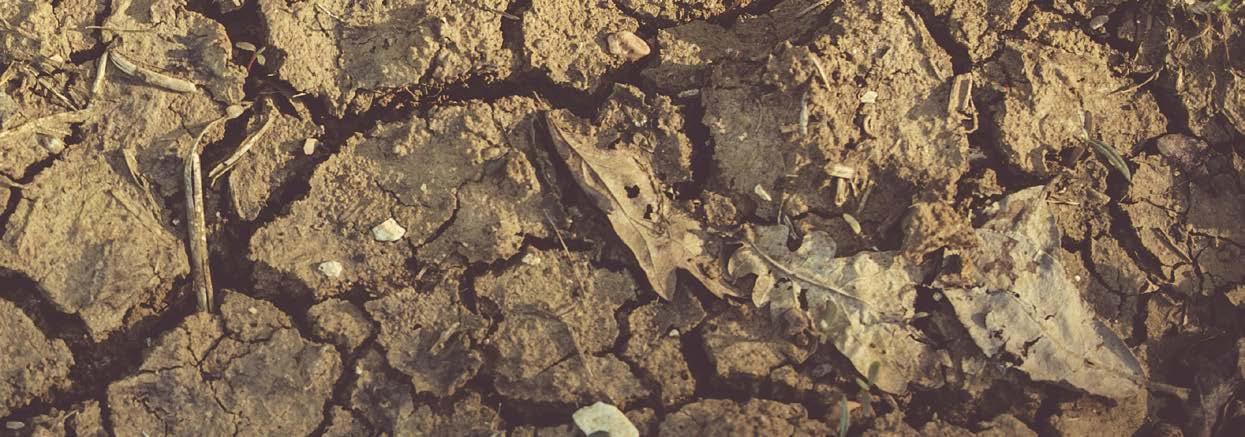
The occurrence of El Niño has a direct impact on the weather in Zambia. President Hichilema declared that the already existing drought was intensified by climate change and the El Niño weather phenomenon.
Combat the drought this way
There is no escaping the reality: a shortage of water is not good. However, there are some tips and tricks you can use to make this crisis a little more bearable on your farm:
• Understand your crops’ watering needs: Watering your crops at specific times and intervals will be more beneficial than just watering it randomly. This means you are using the water effectively.
• Store water for later use by building a water storage system or by storing it in ditches along fields.
• Enhance your soil's water retention and minimise evaporation by leaving crop residue on your field.
• Minimise both the frequency and depth of tillage to decrease moisture loss, as it intensifies with the number of passes and the depth of cultivation.
• Improve your soil by adding compost, planting cover crops, and growing green manure crops. This helps the soil to hold more water.
• Cover your soil with straw or cardboard. This may not work well for big areas, but it is really good for small gardens. On larger vegetable farms black plastic covers can be rolled out with a tractor, to stop weeds from growing and keep the soil moist.


The North Bank unit of the Kariba dam’s hydro power station normally supplies Zambia with more than 1 gigawatt of power. The low dam level is now threatening this supply.
Al Jazeera. 29 Feb, 2024. Zambia declares national disaster after drought devastates agriculture. https://www.aljazeera.com/ news/2024/2/29/zambia-declaresnational-disaster-after-droughtdevastates-agriculture
Powell, M. 2014. 15 ways to help mitigate drought on your farm this season and beyond. Oregon State University.

ProAgri Africa 98 15
(Photo: Ada Ojdahl, Flickr Creative Commons)
President Hakainde Hichilema has officially declared a national state of disaster in Zambia. (source: Invest Africa)
Technews: The latest in agricultural technology from around the world
Tortuga AgTech wins Ag Robot of the Year 2024 award
by Annemarie Bremner

Last month we showed the top five contenders for the Ag Robot of the Year title in a competition run by Future Farming. The panel of judges chose the Tortuga AgTech strawberry and table grape harvesting robot as the winner. The robot is primarily designed for harvesting, but can also collect data for forecasts, treat plants with UV-C light and perform trimming.
Each jury member judged the finalists individually according to these criteria:
• Originality/technical breakthrough
• Feasibility/market readiness
• Potential to impact farmers' life
• Ease of farmer uptake, and
• Sustainability
One of the main arguments why the jury chose Tortuga AgTech as the winner is the fact that the harvesting robot addresses one of the most significant challenges faced by agricultural businesses: the shortage of affordable and skilled
labour. The jury was also impressed by its ability to harvest multiple types of fruits with a single robotic harvester. This machine transforms what was only a vision a few years ago into a reality. It demonstrates how ag robots are the future, making predictions come to life and inspiring others to explore the possibilities. It is highly practical, offered on a service contract basis at a cost equivalent to hiring labour.

Its real value lies not in labour savings but in providing a solution to the industry’s labour crisis. Some farmers have ceased crop production due to the lack of harvest staff. Additionally, its versatility shines as it not only harvests and transports crops but also treats them with UV light, trims runners, and logs essential data. (Source: Futur Farming)
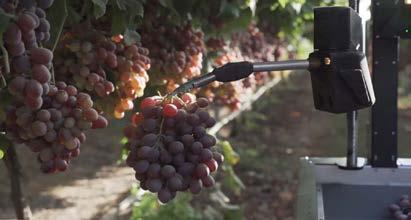
16 ProAgri Africa 98
The Future Farming Ag Robot of the Year 2024 is the Tortuga AgTech strawberry and table grape harvesting robot.
Tortuga AgTech can harvest, collect data, treat plants, and perform trimming. (Photo’s: Tortuga)
Zambia

New intelligent spot spraying system
A new, intelligent spraying system for use in onion, leek, and carrot fields has been launched after a successful collaboration between Techneat Engineering and Tillett and Hague Technology Limited.
Weed Wizard is a tractor-driven, front-mounted, 3-bed, 6-metre wide folding boom incorporating an intelligent spraying system.
Using very high-speed, narrow jet nozzles spaced every 100 mm across the full width of the boom, its threecamera system identifies and tracks weeds as they come into view, applying a narrow flat fan spray onto each weed as it passes under each nozzle. Each camera tracks a single bed and is mounted directly above the crop row giving the machine the best possible overhead view of the weed population as each crop pass is made.
At a working speed of 5 km/h, each nozzle can react multiple times in a matter of milli-seconds ensuring that no targeted weed is missed during each pass. The boom is also deliberately set at a height of only 50 cm above ground level, making the machine far less susceptible to drift in windier conditions when combined with the use of extremely low drift, flat fan nozzles.
The Weed Wizard is available in tank sizes of either 650 or 250 litres, operates in normal daylight conditions, and does not require infra-red technology. “This gives it a significant advantage because it does not require a hood to cover any part of the sprayer to maintain dark conditions. Use of a hood can easily damage the crop during operation,” says Tom Neat, Techneat Engineering’s MD.
A side-shift system also supports the accuracy of the Weed Wizard by ensuring that the sprayer boom maintains a stable position over the crop at all times, even if the tractor cannot, due to uneven ground.
The new system offers a number of different pre-settings, enabling the operator to set the minimum weed size for control before operation and vary the quantity of chemicals applied to each target weed to minimise overspray. The operator can also adjust the machine’s field of vision to reflect a 1-bed, 2-bed or 3-bed growing system.
Nick Tillett, Director and co-founder of Tillett and Hague Technology who designed the spot sprayer software system used by the Weed Wizard, sees the intelligence and reliability of the system as the keys to its success.
Mr Tillett says: ”The spot sprayer software simultaneously monitors the forward speed of the tractor and assesses the visual data from each camera using computer algorithms to identify weeds based on a combination of factors including the plants position relative to crop rows, size, shape, and colour.
“Although the system was originally designed for targeting volunteer potatoes, it has since been developed to recognise all types of broadleaf weeds. Once a weed has been identified on screen, the algorithm decides which nozzles should be switched on, and for how long, in order to deliver the right quantity of herbicide to each targeted weed with minimum overspray.
“The system is fully automated so, once the operator has pre-set the spot sprayer, it will target weeds with a very
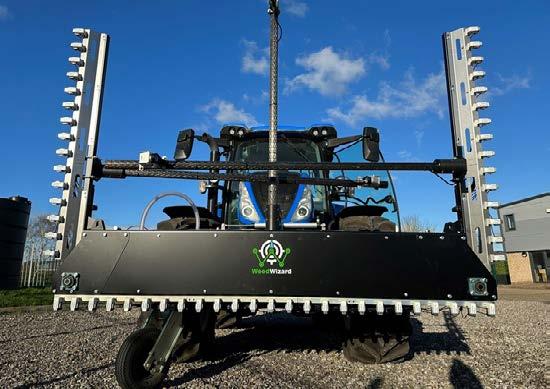
high degree of accuracy minimising collateral contact with the crop, based on the specific pre-settings.
On the software licensing, there are no annual or renewal fees to pay and any upgrades are sent to the user without cost,” he concludes. (Source: www.aafarmer.co.uk)

CNH Venture expanded their Ag Tech solutions for farmers by taking a minority stake in Bem Agro, a Brazilian startup and existing supplier to CNH.
Bem Agro uses AI to convert any type of aerial field image, including those taken from machines, drones and satellites, into Agronomic Mapping Reports. These reports provide vital data that enables farmers to make better decisions about optimising field operations, allocating resources and increasing yield. Overall improved machine performance, greater productivity, and reduced running costs are also achieved by using this technology.
In sugarcane, grain and fibre harvesting, where farmers can face low-visibility conditions, Bem Agro’s maps provide guidance lines for course correction and crop damage reduction. Their weed mapping pinpoints specific areas to be sprayed, minimising herbicide usage.
This investment follows more than five years of successful commercial partnership with Bem Agro. CNH currently uses their mapping solutions on Case IH and New Holland brands’ Connected Platforms for sugarcane harvesters, tractors and sprayers in Brazil, Indonesia and Thailand. Together with Bem Agro, CNH aims to significantly enhance their current and future precision technology solutions, services, and reach for agriculture across Latin America and Asia Pacific.
Positive feedback from the CNH dealer network and customers was instrumental in driving this strategic investment for CNH. (Source: WorldAgritech.com)

ProAgri Africa 98 17
The Digital Workbench Tipard 1800 was preferred by the majority of the public voters. (Photo: Mark Pasveer)
CNH invests in AI drone imaging
The Weed Wizard identifies and targets weeds in vegetable fields.





Heat stress management in dairy cows


Heat stress occurs when cows generate and absorb more heat than what they can easily get rid of. Heat is mostly generated during the hot periods of the day and during feeding. The major causes of heat stress are high temperatures and humidity. Cows experience heat stress at a much lower temperature than humans, namely around 22 degrees Celsius. Good ventilation, respiration, and sweating are ways in which cows manage heat stress.
 by Sarah M Kunda
by Sarah M Kunda
Ventilation
Barn ventilation allows air exchange between the cows and the outside environment via natural or mechanical means. Natural ventilation depends mainly on wind and hot air movement. It involves uncrowded barns and open ridges, sidewalls, or eaves to allow air in and out of the barn. Mechanical means can involve fans or extraction fans.
Importance of heat stress management
It is important to manage heat stress because heat stress leads to more stress, lowers milk production, and also leads to an increased rate of disease and death. Heat stress leads to production costs and poses a danger to the dairy business; it is therefore very important to manage it and avoid costs and losses due to lower productivity and disease.
Methods of heat stress management
There are many ways to manage heat stress such as using ventilation, providing shade, hydration, and cooling with water sprinklers.

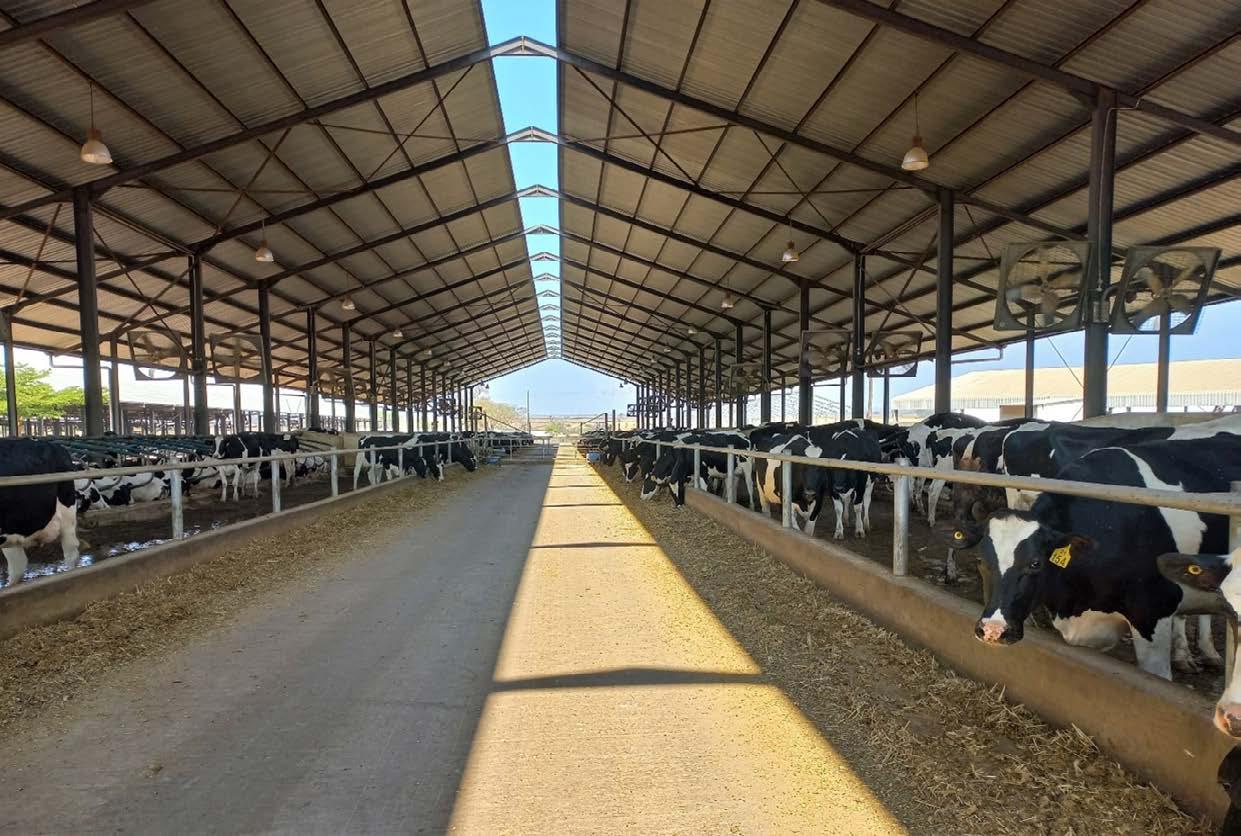
Shade
Shading is one of the most easily implemented and economical methods to minimise heat from solar radiation. Barns must be constructed strategically to avoid direct and indirect sunlight passing through. Numerous types of shading are available, from trees (which are easily killed by high cow density), to metal (roofs) and synthetic materials (shade cloth).

ProAgri Africa 98
Animal nutrition... weathering changing conditions.
Weather-resistant phosphate trace-mineral supplements and concentrate for your cattle, sheep and goats.
PhosSure 6/12 & PhosPro 17:
• Essential for optimal growth, production and reproduction of animals grazing phosphate poor pastures.
• The molasses byproduct enhances palatability to ensure sufficient P intake.
• Contains increased levels of essential trace minerals in the correct ratio to phosphorus.
• A unique feature is the hard crust that forms after exposure to moisture, protecting the product from rain damage.
• PhosPro 17 contains 17% protein in the form of Feed Grade Urea for optimal activity of the microbes in the rumen.
For that extra nutritional boost when your animals need it most.
www.yara.co.za/animal-nutrition/ animal.nutrition.sa@yara.com | Tel: +27 (0)31 910-5100
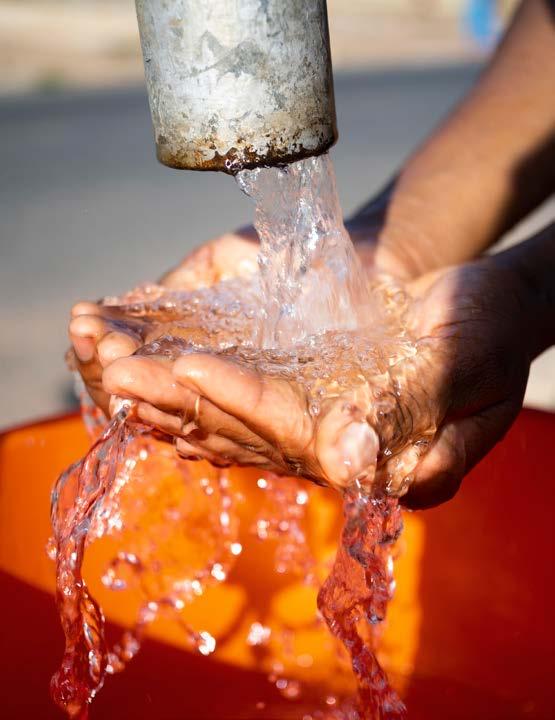


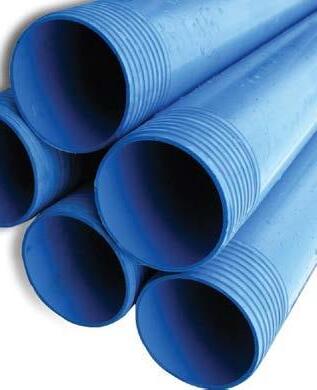
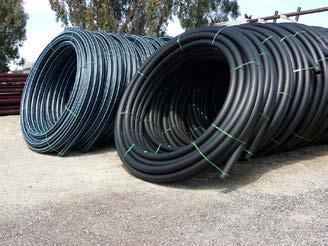





20 ProAgri Africa 98 Zambia CONVEY SAFE drinking water with our quality and durable pipes CASING PIPES UPVC PIPES MPVC PIPES Lightweight Pressure Resistance Shock Resistance Our pipes require minimum maintenance, have high tensile strength and have unmatched durability. Phone: + 260 978 002 222 | Tel: +260 211 233 105 | Email: sales@zampipe.com CONTACT US: ADDRESS: #687, Los Angeles Road, Makeni, Lusaka, Zambia HDPE PIPES Extracting water from domestic wells Industrial borewells Agricultural bore wells
Yara Animal Nutrition South Africa (Pty) Ltd. Reg.
PhosSure 6 – SA Reg. No. V11350, PhosSure 12 – SA Reg. No. V12858, PhosPro 17 – SA Reg. No. V24441 (All products are registered under Act 36 of 1947.) uppe marketing A34505
No. 2001/025850/07
Hydration
Hydration is important both during heat stress and cold stress. Water intake increases during heat stress. A cow can drink about 50 to 60 gallon (190 to 227 litre) per day. It is therefore very important to provide more locations for cool and clean water.
Cooling with water sprinklers
Water sprinklers will wet the cow’s body and reduce its body temperature. Sprinklers should wet the back of the cow and then stop to allow the water to evaporate prior to another cycle. It is advised to have a water sprinkler at the milking parlour exit too.
Nutritional management
Feeding higher-quality forages increases the energy content of the diet, which helps to maintain adequate rumination, and decreases the fermentation heat associated with feeding lower-quality forages. Starch should be minimised and feed is to be given in the cooler times of the day.
Genetic selection
Another option used to minimise heat stress is to select a breed that can handle the constraints of the environment the animals are reared in. Another alternative is to select for specific traits conferring resistance to heat stress.

For more information, contact the Novatek technical team or visit https://novatekfeeds.com/.


ProAgri Africa 98

Nature conservation is everyone’s responsibility
By Natasha Pretorius
When it comes to nature conservation, it does not matter to WeWild Africa whether it is an elephant or a mongoose that needs to be saved, they have made it their mission to protect Africa's wildlife.
The organisation was founded in 2019 by Damian Aspinall, Tansy Aspinall, Amos Courage, and Dereck Milburn and their head office is in Cape Town. Together, the four have more than 100 years of experience in nature conservation.
WeWild Africa conducts wildlife rescues, wildlife rehoming and landscape rehabilitation across Africa. They have permanent projects in South Africa, Gabon, Congo, Zimbabwe, and Mozambique. The organisation does not believe in putting down problem animals, but rather in capturing them and re-establish them back into the wild.
Through collaboration with stakeholders, they ensure that endangered wildlife and neglected landscapes are given a second chance.
What makes WeWild Africa different?
• They are one of the only organisations that can respond to emergency calls within 24 hours and capture and relocate animals.
• They can offer solutions to situations that others may sometimes think are impossible
• They rehabilitate animals and plant life.
The rehabilitation of the Loskop Dam Nature Reserve
One of the major projects they are tackling with The Aspinall Foundation is
a first-of-its-kind partnership with the Mpumalanga authorities to rehabilitate the Loskop Dam Nature Reserve.
This ambitious rehabilitation and expansion initiative will be the forerunner for other partnerships with government departments in other provinces.
"Hundreds of thousands of hectares of wilderness areas are at risk and WeWild Africa believes it can be saved with the help of the private sector. The two organisations want to be pioneers in giving other reserves a second chance as well," says Dereck Milburn, Director of WeWild Africa.
The project aims to bring back important animal and plant species that used to occur naturally in the area. In addition to the reserve's unique plant and animal life, there are also historical attractions such as old graves. Loskop Dam Nature Reserve is also home to the critically endangered Middelburg cycad.
Opposite the reserve there are wilderness areas owned by communities and individuals.
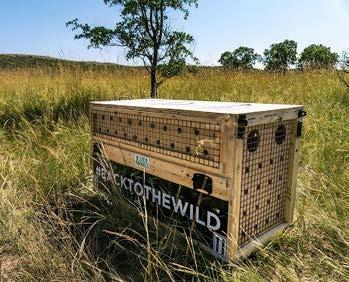


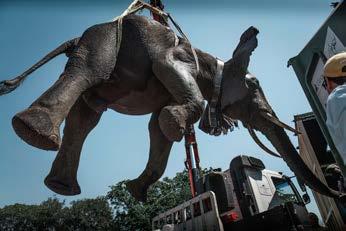
WeWild Africa and The Aspinall Foundation succeeded in securing a longterm lease with several of the owners. This means the size of the reserve can be increased from 23 000 hectares to almost 100 000 hectares.
The relocation of animals
One of the things WeWild is very concerned about is the relocation of wild animals born in captivity. Some of these animals have grown up in cages and have never walked in the wild. With the organisation's help, thousands
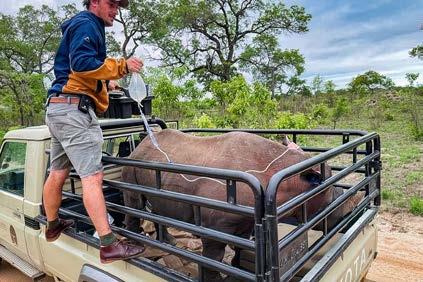
22 ProAgri Africa 98 Zambia
of animals have been able to experience their natural habitat again.
This organisation regularly gets called out to help rhinos who have bullet wounds, as well as giraffes and elephants caught in snares. When a problem animal breaks loose and damages someone else's property, quickthinking solutions are essential.
WeWild Africa believes that working with as many stakeholders as possible will make their model a success, they also like joining hands with the agricultural sector.
Their practical approach and smart collaboration with strategic partners have already led to them accomplish many historical achievements in their short existence.
In the past few years, this organisation has already saved or improved the lives of more than a thousand animals and plan on increasing this number to 1 500 animals by the end of 2024.
Damian says: “We go where few other organisations are willing to go, to make sure the future of endangered species and landscapes is secured. We ask 'why not?'. WeWild Africa wants to change the conservation landscape in Africa, by implementing key conservation solutions and a network of collaboration.”
WeWild Africa's outlook for 2024
• To rescue and relocate another 500 animals.
• To transform their Loskop Dam rehabilitation project into a working programme.
• To set up several large rhino translocation projects in the country.
• To present solutions to the government and to increase their footprint in Africa.
Even before the first month of 2024 was over, they had already rescued five elephants that had escaped from the Ndumo Game Reserve and moved them to a safe place.
The emergency call was made by Ezemvelo KwaZulu-Natal Wildlife's
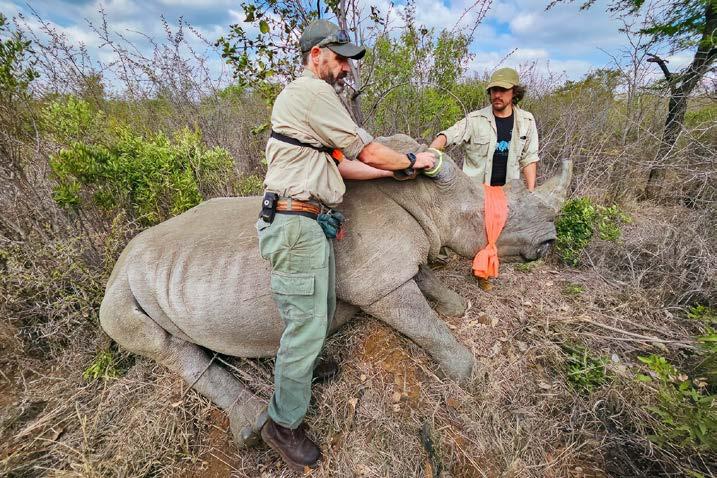
acting Chief Executive Officer, Sihle Mkhize, who informed them that five elephants from the reserve had wandered about 16 km south of the border. The elephants invaded the community's lands, causing danger to the people. The area is a bio-diversity area in Maputoland near Mozambique's border.
On January 20, 2024, WeWild Africa got the resources and money together and an emergency air rescue was carried out. After 36 hours, they were able to get all five elephants safely back to where they should be.
WeWild Africa can help
Although they work very closely with Zimbabwe and Mozambique's governments, government permits to operate in other countries remain a challenge, because the bureaucratic process can be slow.
"We also have some opposition from farmers who do not support our actions. They would rather shoot an elephant than save it. It is only a handful of farmers, but it happens."
The organisation wants people to


help spread the word that there are other solutions than shooting problem animals. They want the public to be aware of the services they provide and call on them in time of need.
"We must act now. What we do not protect in the next five to ten years may be lost forever".
"It is not only the government's responsibility but everyone's. This is our heritage, and we all have to work together," Dereck said.
To get in touch with WeWild Africa, send an e-mail to info@ wewildafrica.com


ProAgri Africa 98 23
BSi Steel explains the danger of using low quality steel
by Maryna Steyn
Using high quality steel for the erection of steel structures not only ensures the longevity of your structure; it also ensures your safety. For the prominent steel supplier, BSi Steel, it is important that customers understand this principle, especially when keeping costs low is a priority.
“The first thing clients need to understand is that the lifespan of the product is shortened if low quality steel is used,” says Gary Hodgkinson, Senior Trader in Lusaka.
“It also causes safety hazards, especially if under gauging is used for structural steel. Cheap ends up being expensive.”
Gary explains that structural steel has the highest risk, for example, low grade reinforcing bar used in two- or three-story buildings. The reinforcing bar ordered is 12 mm, but the contrac-
tor supplies 10 or 11 mm diameter reinforcing bar. The invoice will show 12 mm and to the naked eye, you cannot tell the difference. The result can be a collapsed building and loss of life. “It is more prolific with flat sheet products,” he adds. “Some manufacturers are profiteering off the backs of hard-working customers.
So, how do you know if the steel you purchased is high or low quality? “Sometimes it is easy. For instance, round tubing has a split seam, or the welding creates holes because the gauge is too thin. The best way to ensure you receive high quality steel is to ask for the material test certificates.”
When looking for high quality steel products, customers can:
• Measure the steel using a digital micrometer. Tubing and flat sheet are almost always under gauged.
• Ask for test certificates.
• Purchase from reputable companies that provide official tax invoices. If they cannot, this is the first red flag.
BSi Steel ensures products are of the highest quality by purchasing from the best steel mills. “We have test certificates for all relevant material,” Gary says. “Our brand is also known for high quality material and excellent customer service.
“Furthermore, we make sure that the material ordered is from the correct supplier and we measure it to determine its legitimacy. We conduct spot checks on our material for any damages.”
KITWE BRANCH
+260-212-210-670
saleskitwe@bsisteel.com
LUSAKA BRANCH
+260-211-222-112
saleslusaka@bsisteel.com
www.bsisteel.co.za

24 ProAgri Africa 98 Zambia
Broiler uniformity is money
by Given Hamanungu, Technical Advisor, Tiger Animal Feeds
Uniformity of performance in broilers
Broiler business demands good results for good performance, therefore when measuring the success of a broiler business, the following typical performance parameters should be taken into serious consideration:
• Market weight
• Days to market
• Mortality
• Feed conversion ratio (FCR)
• Profit per kilogram (after feed and chick costs)
age of birds that are within +/- 10% of the average. The larger the number, the more uniform the flock.
The Coefficient of Variation (CV) is calculated as the standard deviation divided by the average. In the case of the CV, the larger the number, the less uniform the flock.
What are some of the causes of poor uniformity?
Brooding management can provide a
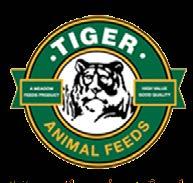

the flock resulting in severe economic losses. FCR is badly affected by unevenness in a flock and the result is less profitability.
Ventilation: More CO2 and the less O2 will affect chick development and increase incidences of respiratory disease and ultimately unevenness in flock. Proper ventilation during brooding is very critical. If ventilation is not proper there may be more ammonia and CO2 causing variation in chicks and predisposing these chicks to many diseases.


These are the key performance indicators for how the flock performed, and they give useful information for a farmer to benchmark how the business performed compared to standards, previous flocks, and sometimes with neighbours. That is why it is important to update records on everyday activities during production.
Regular broiler monitoring progress during production is a great way to ensure success and gives the opportunity to make informed business decisions when necessary. Periodical (preferably weekly) weighing of at least 10% of the total flock is the most typical practice for within-flock monitoring. However, this method only provides an average weight.
One of the most important management tools to use as parameter is uniformity, also known as the coefficient of variation, which describes the quality of the brooding and growing process. Uniformity in broilers is important because it determines the range of body weight and for instance breast meat yields delivered at the processing line.
A high degree of uniformity means that the majority of the birds are in a very small range of body weights, and there is not a lot of difference between the biggest and the smallest birds.
Uniformity is calculated as a percent-
good or bad starting point to a chick’s life. Most of uniformity problems occur during brooding and therefore favourable conditions are extremely important during this period.
The following key broiler management factors affect uniformity:
Feed and water: It is essential to have enough feed and water before the arrival of chicks. Feed should be in feeding pans, supplemental feeding trays and on paper covering at least 80% of the brooding area.
Temperature: Chicks’ bodies cannot regulate their own temperature, meaning their body temperature is dependent on the environmental conditions. Brooding period is always very crucial, especially in winter. Before the arrival of chicks, preheating of sheds is very important. A chilled bird will need to use energy to maintain homeostasis rather than for growth and development. Depending on the weather, area, type of construction, insulation status and other factors, the pre-warming should be started from 24 to 72 hours before arrival of chicks at the farm. Before placement of the chicks the best floor temperature is key to a good start and good uniformity.
Disease: Different types of enteric and other diseases can easily disturb
Uniformity is money
Good uniformity in broilers is the key to maximise the performance. Variation in their body weights causes lot of complications and problems. If the flock is not uniform, it will take a longer time to grow, and many will be rejected at the time of slaughter.
Different types of management deficits and other diseases can easily disturb the flock resulting in severe economic losses. FCR is badly affected by unevenness in a flock and the result is less profitability.
If the chicks grow at different rates the environment will not be ideal for all the different sizes of chicks placed in the same house, resulting into a lot of stress on some chicks making them more prone to diseases. Remember “uniformity is money”. Try to have a maximum uniformity to maximise the profit.
For more information, phone +260-967-933-658 / +260975-403-834 or send an e-mail to givenhams@gmail.com.
ProAgri Africa 98 25










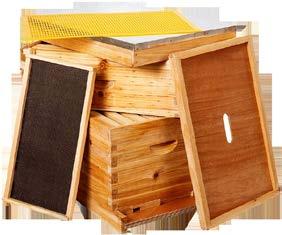



























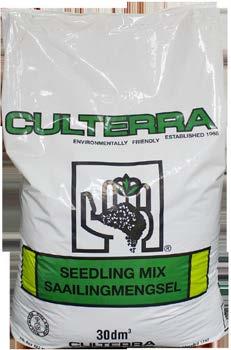



















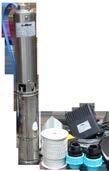



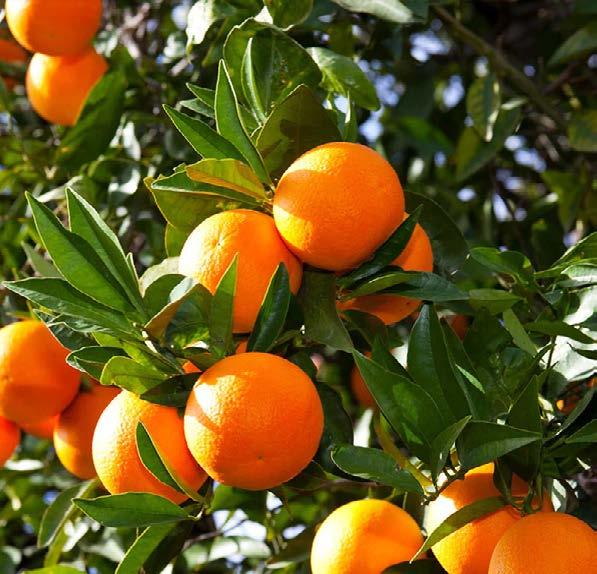
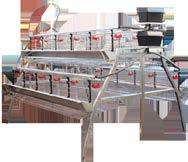










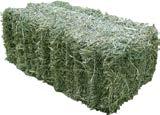









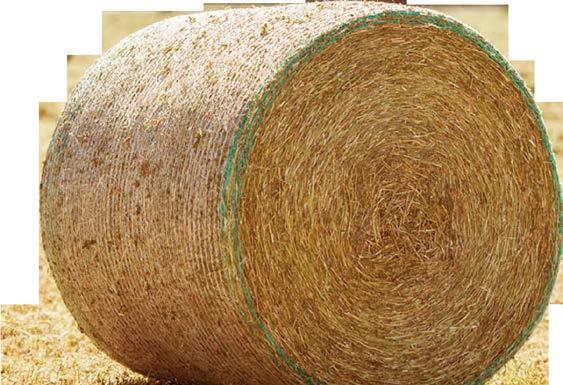










ROW PLANTERS DISC HARROWS LAND RIPPERS From New Lobatse Road, Plot 14400/1 G.West Industrial To Kgomokasitwa Road, Plot 22013 G.West Industrial RELOCATED TO A NEW PLACE CALL +267 75713540 MAP: https://goo.gl/maps/vdeRnp4WN21obEBC6?coh=178573&entry=tt EARTH AUGERS TILLERS BLOWERS WATERPUMPS MASSEY FURGUSON SERVICE KIT & PARTS START YOUR OWN PRODUCE EGGS AND MEAT PRODUCTION IRRIGATION SYSTEMS DRIPLINES & PUMPS FILTERS ALL LIVESTOCK FEED SUPPLEMENTS AND CARE BEE KEEPEING EQUIPMENT BEE Happy yoyful new year LS-100 PACKAGE 2024 WHEAT STRAW & LUCERNE IN STORE
POTATO TUBERS
‘ ’

Peter Kaniye from Never Ending Foods explaining the importance of mixed-cropped systems to a group of agricultural extension officers. (Source: Supplied)
The livelihoods of Africa’s 500 million small-scale farmers depend on seed for grains, legumes, and vegetables. Seed is also at the heart of the numerous cultures in Africa.
“Seed is under siege,” says Rachel Wynberg, a professor at the Department of Environmental and Geographical Science at the University of Cape Town (UCT). Rachel is the editor of African Perspectives on Agroecology: Why farmer-led seed and knowledge systems matter, a collection of research essays on the theme published earlier this year.
“As the world’s food and agricultural systems become increasingly industrialised, homogenised, and privatised, seed has become something of a poster child for the struggles involved.”
These struggles include the “deep injustices” that have emerged through years of colonisation and exploitation. This includes policies and laws that have for decades supported the interests of commercial farmers and multinational seed and agrochemical companies, often at severe cost to the environment, climate, and small-scale

farmers. It also includes the so-called Green Revolution that promotes genetic modification as a shortcut to higher yields and more profits.
On the other hand, little has been documented about the resilience of local seed systems and innovative approaches adopted by small-scale farmers across the continent to retain agrobiodiversity, while pursuing agroecological approaches to farming that not only produce sufficient food but also eliminate harmful inputs. Social movements, long silent in Af-
rica, are emerging as a powerful force for change, alongside the range of NGOs that provide support to farmers at different levels.
Never-Ending Foods Malawi
The Malawi Indigenous Food Revival Group is one such group that is promoting the use of organically produced seed of indigenous African grain, legumes, and vegetable plants.
The group includes Kristof Nordin, the founder of Never-Ending Foods in Malawi and his wife Stacia, a permaculture expert. The group also include Jurie van der Walt, a researcher on indigenous and ancient African food plants, Andrew Goodman, Megan Banda, and Lana Howard from Green Growth Development, Afshan Omar, owner of Area 25 Health Centre in Malawi, and Clement Taonani from Nthawi Farms in Malawi.
Their objective is to assist and enable small-scale farmers to grow and multiply their own seeds and to distribute these seeds among each other for cultivation.
Permaculture
“Permaculture, which relies heavily on traditional knowledge, is at the basis of what we are trying to do,” says Jurie. “It integrates ecological principles,

ProAgri Africa 98 27
Stacia and Kristof Nordin of NeverEnding-Foods. (Source: Supplied)


An optimized drive concept of the latest generation enables precise, fast, and efficient work. The electronically controlled hydraulic pump permanently adapts the required hydraulic power to the available power of the diesel engine.

Botswana 28 ProAgri Africa 98
Tell: +267 311 0876 | info@afgriequipment.co.za
ET 66 EXC AVATOR ECONOMIC. POWERFUL. DURABLE.

sustainable agriculture, and ethical considerations to create harmonious and resilient systems for living and food production. It emphasises working with nature rather than against it, promoting biodiversity, soil health, water conservation, and self-sufficiency.”
Jurie believes one of the biggest problems African communities are facing today is not the lack of food, but food that has very low levels of nutrition. Traditional food plants can address this nutrition deficit.
“Permaculture aims to create sustainable human habitats that meet human needs while enhancing ecological health and community well-being. Seeds grown by small-scale farmers and exchanged among each other form part of this ecological approach.”
Research on permaculture conducted in Malawi demonstrates that small-scale farmers grow on average three times more crops and more crop varieties per food group than conventional farmers. They spend less on inputs, eat a wider diversity of food groups, have increased food security, and benefit from permaculture because they use practices that address household constraints and expand their adaptive capacity.
GMOs
Some African farmers may be hesitant to adopt genetically manipulated seeds. “The debate around seeds for agricultural produce, particularly regarding genetically modified organisms (GMOs), is complex and touches upon various economic, environmental, social, and ethical considerations,” explains Jurie.
GMOs are organisms whose genetic material has been altered in a way that does not occur naturally through mating or natural recombination. In agriculture, this often involves the insertion of genes from one organism (such as a bacterium, or another plant species) into the DNA of a crop plant to confer desired traits, such as resistance to pests, herbicides, or environmental stresses.
Supporters of GMOs argue that these seeds offer several potential benefits, including increased crop
yields, reduced dependence on chemical pesticides and fertilisers, enhanced nutritional content, and improved resistance to pests, diseases, and adverse environmental conditions. These traits could contribute to food security, economic growth, and environmental sustainability.
Concerns
However, there are concerns about the use of GMOs, including possible environmental risks, such as the unintended spread of modified genes to wild relatives, the development of resistant pests and weeds, and the loss of biodiversity.
There are also potential health risks associated with consuming GMOs as long-term effects are still unknown despite scientific consensus holding that GMOs currently on the market are safe to eat.
At the heart of the conflict is access to seed and control over its ownership. “One of the major concerns among African farmers is the issue of intellectual property rights and dependency on seed companies,” says Jurie.
Many GMO seeds are patented, and farmers have to repurchase seeds each planting season rather than saving and replanting traditional seeds. This can lead to increased costs and a loss of traditional farming practices.
While the dust has not yet settled on GMOs, New Genomic Techniques (NGTs) are touted to be the new answer to quicker development of seeds. A ‘genetically modified organism’ (GMO) may be a plant, an animal, or a microorganism whose genetic make-up has been modified using biotechnology, typically by transplanting genes that code for desirable traits from one species into another. NGTs are used to edit the existing genes of an organism in a highly targeted way and without inserting any foreign genetic material.
Jurie quote Stacia on this: "We do a lot of reading on genetic engineering and have not found that humans are making wise decisions on its use in agriculture. Often it is used to make plants withstand chemical sprays. Diverse organic agriculture in harmony with nature is a much better option.”
Alternative approaches
Jurie believes there are alternative natural approaches such as agroecology, organic farming, and participatory plant breeding. These approaches prioritise ecological sustainability, biodiversity conservation, farmer autonomy, and social equity.
“There are two types of seed systems, namely farmers’ and commodity seed systems. Farmers’ seed systems, defined by the continuous renewal of biodiversity and the free distribution of seeds and knowledge among people, make food systems more resilient against climate change, pests, and pathogens.
“This is because the more diverse a food system and the more dynamic the global ecosystem, the higher the chance that any one species has a particular trait that enables it to adapt to a changing environment, and, in turn, pass that trait along.”
Silent revolution
In a recent discussion paper, Kristof summarises what the agricultural debate is about: “The global implementation of sustainable and agroecological solutions is sometimes referred to as a ‘silent revolution’, due to the fact that it is quietly but steadily growing in both size and popularity.
“Governments continue to invest in large-scale subsidies to agribusiness approaches, while organic farmers are required to pay out of their own pockets to certify the fact that they are farming in an eco-friendly manner.”
High-input approaches to food production are promoted as ‘progress and development’, while sustainable solutions are ignored or shunned. “But we find, as this revolution grows, that individuals, families, and entire communities are joining together to reap the benefits of working towards the creation of an ecologically sustainable future.”
Ecologically sustainable future
The goal of creating a sustainable and resilient future in agriculture means implementing the solutions offered by permaculture: planting trees, harvesting water, mulching the soil, diversifying crops, protecting wildlife, saving seeds, designing green buildings, harnessing renewable energy, sharing indigenous knowledge, and marketing sustainable products.

Source references
Wynberg, R. (Ed) (2024) African Perspectives on Agroecology: Why farmer-led seed and knowledge systems matter, Practical Action Publishing Ltd 10_3362_9781780447445 (3).pdf
Koku, O.P., Lenzi, D. (2024) Euroviews. In farming, genomic techniques can't afford a repeat of disastrous GMO rejection. Euronews https://www.euronews. com/green/2024/02/16/in-farminggenomic-techniques-cant-afford-a-repeat-of-disastrous-gmo-rejection
New Genomic Techniques: what are they and how can they improve our food systems? (2023) EUFIC
https://www.eufic.org/en/food-production/article/new-genomic-techniqueswhat-are-they-and-how-can-they-improve-our-food-systems
ProAgri Africa 98 29
Peter Kaniye with a group of local chiefs to whom he explains the importance of nutritional diversity. (Source: Supplied)
Contact Jurie van der Walt at jurievdw@mweb.co.za.




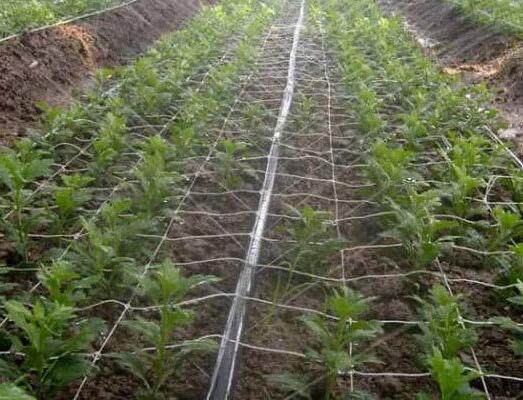


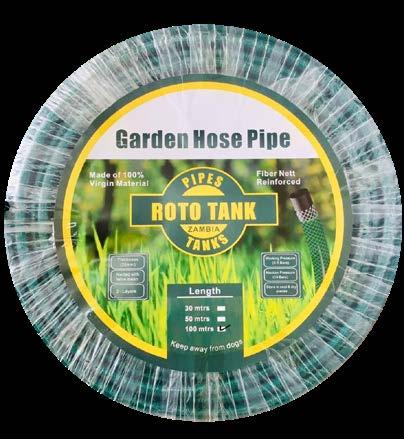

30 ProAgri Africa 98 sales@rototankzambia.com 0960 567 058 / 0971 926 953 www.facebook.com/RototankZambia Drip tube 16 mm / 0.6 mm Designed to endure the elements and meet the requirements of your farm. Easy to install and maintain! Rain Hose 25mm, 32 mm & 40 mm Garden Hose Pipe 16 mm 30 m / Roll ; 50 m / Roll; 100 m / Roll Drip tape 16 mm / 0.2 mm , 0.3 mm & 0.4mm Available in








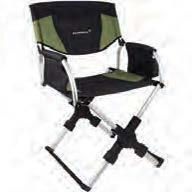
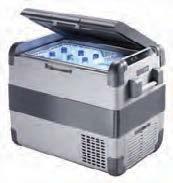



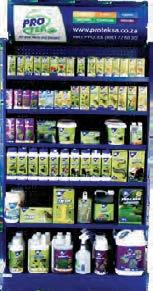









ProAgri Africa 98 31 Nursery Gardening Tools Irrigation OutdoorsAgriculturePet Care 3910480 3910412 @LandmarkBW creditors@winsome.co.bw Visit us in Plot 14457, kamushongo road, G-west industrial, Gaborone Outdoor & Agricultural equipment store Palapye: 4924494 | Francistown: 2421960 | Maun: 6865600 | Kasane: 6250561 Botswana’s ultimate
Banana production in Africa part 3 Desucker, irrigate, and bag for better results
by Benine Ackerman


Desuckering
of a banana plant means cutting off unwanted shoots from the stems of the mother banana plant. This will increase the banana plant size.
Proper watering of the banana plant is very important to ensure proper growth and production. Read more below, especially about drip irrigation.
When customers pick out bananas in the store, they prefer the ones with the least amount of blemishes, bruises, or cuts on the outside of the peel. These bananas have probably been covered with banana bags. The covering of
bananas yields better fruit quality and increases its market value, specifically because of a blemish-free appearance.
Desuckering
1. Use a knife to cut off the stems of the suckers which have grown to about the size of a foot.
2. When planting on a slope, always leave the suckers which are on the uphill side.
3. In the southern hemisphere cut off all suckers which are on the northwestern side of the banana plant.
This is the side where the bunch hangs.
4. After five months from planting, select only one vigorous sucker to carry the next bunch. Cut the remaining suckers. Continue removing unwanted suckers as they appear. Do not pour diesel over the stems of the suckers.
NB: It is important to keep not more than 2 222 plants per hectare. Therefore, after harvesting only one sucker should be allowed to grow.
Removing leaves
Remove lower hanging, yellow leaves from the plant. The old leaves can spread diseases and they can scratch and damage the fruit on the bunch. Use a knife to cut off the old leaves from the banana plant - do not pull them. After removing them you can place them on the ground - they mulch the surface and increase nutrient content in the soil.
Irrigation
For top quality banana production and record yields, precision irrigation is needed.
This will allow you to produce top quality bananas in the demanded quantities, and all at the right time. From getting the perfect finger size to extending the productive life of each plantation to the fullest, precision irrigation allows you to maximize your profits.
Dry spells can pose a major risk to banana productivity, even if you grow in a rainy area. With precision irriga-
Botswana 32 ProAgri Africa 98
Meeting the needs of your banana plants will result in improved yields.
Drip irrigation provides in the water needs of banana trees without wasting water. (Photo: Netafim)
tion, you can lower climate related risks and reduce the unpredictable factors common to banana growing, thereby increasing your production stability.
If you give your bananas exactly what they need you can save on your resources.
Drip irrigation is the perfect system that provides the most efficient delivery of water and nutrients to the roots of your bananas, letting them grow to their full potential. With precision irrigation and modern agricultural practices, you can increase your productivity per hectare while enjoying the ability to deliver constant shipments of highquality produce to your markets.
How to water banana plants:
1. Irrigate newly-planted tissue culture banana plant s every day for 2 weeks (15 minutes per irrigation) to protect leaves from heat stress.
2. In the absence of rain, irrigation water should be applied on a “little and often” basis to banana plants.
3. For heavy loamy soil apply 20 mm of water every 3 days in summer and every 8 days in winte r.
Example:
Nozzle delivery = 3 mm per hour
For every irrigation, run the system for 20 hours divided by 3 hours. This equals 6 hours and 40 minutes (20/3 = 6 hours, 40 min).
Netafim has a perfect and reliable drip irrigation system for your banana production. Get more information here: https://www.netafim.com/en/productsand-solutions/product-offering/dripirrigation-products/
Bagging bananas on the trees
Covering the banana bunches with bags will protect them against insects and wind.
The types of bags used include transparent, blue polyethylene, half blue and half silver plastic, all-season bunch covers, and PP non-woven skirting bags. Some bags, mainly used by commercial growers, are saturated with insecticides to protect banana crops.
These bunch covers or banana bags protect bananas and other fruits against pathogens, damage from wind, birds, and sun, scarring, and damage during harvesting.
Additionally, banana bags can protect fruits from freezing temperatures and reduce stress.
Different types of bags have different functions
Protection against the sun: Transparent bag covers are mainly used to block UV rays from the sun. These bags allow for better light and temperature to penetrate the bananas and increase their growth. In certain conditions, where sunscald is an issue (basically sunburn on bananas), transparent bags are not used.
Blue polyethylene bags are commonly used by large-scale, or commercial banana farms.
The blue polyethylene blocks UV rays but still allows heat to penetrate, promoting optimal growth. These bags also prevent infestations from insects, and provide protection against birds and other environmental factors.
Maintain proper temperature of the bananas:
Half blue and half silver plastic bags have a dual cooling and heating feature.
Facing the blue side towards the north (the sun) and the silver side towards the tree increases the temperature within the bag during the winter months.
The opposite is true during the sum-
mer and warmer months. Facing the silver side towards the north (the sun) during the summer months decreases the temperature within the bag.
This dual feature helps keep a constant temperature in the bag to improve fruit growth.
An all-season bunch cover is a bag used to protect against harsh growing conditions. It was developed in Australia and ensures even heating, lighting, and development of bananas. They also have more UV protection than other banana bags.
Controls ripening of bananas: Next is the PP (polypropylene) nonwoven skirting bag. These bags are made of a fabric that protects without sacrificing water permeability.
This type is supposed to help control the ripening of bananas and allow airflow and moisture circulation. It is also said to block insect and pathogen infestations completely.
This article is published with acknowledgement to the ARC-Institute for the use of their manuals. For more information on banana production, visit the ARC’s website at www.arc.agric.za.
Additional sources:
DeAngelis, Z. 2022. Why They Put Bags On Banana Trees And How It Works.
https://treejourney.com/why-theyput-bags-on-banana-trees-andhow-it-works/
Netafim. 2022. Products and solutions.
https://www.netafim.com/en/ products-and-solutions/productoffering/drip-irrigation-products/


ProAgri Africa 98 33









Namibia 34 ProAgri Africa 98
Monday Tuesday Wednesday Thursday Friday 1 2 3 4 5 Omega meatmasters Meatmaster consortium GEUST SELLER: floors nel dorpers, Stampriet 8 9 Blumfelde - Sheep, Goat, Cattle 10 Koës - Sheep, Goat, Cattle 11 Keetmansoop - Sheep, Goat, Cattle 12 Mariental - Sheep, Goat, Cattle 15 16 Witbooisvlei - Sheep, Goat, Cattle 17 Mariental - Cattle 18 Geikous - Sheep, Goat, Cattle 19 22 23 Monica - Sheep, Goat, Cattle 24 Aranos - Sheep, Goat, Cattle 25 Hoogvertoon - Dorper/ WDorper/ Van Rooy/ Boergoat Goreis Koës 26 Mariental - Sheep, Goat, Cattle Namibia Livestock Auctioneers (Pty) Ltd Private Bag 2100, Mariental, Namibia Tel: (063) 242142 | Fax: (063) 240788 | E-mail: nla@iway.na Parkstreet 55, Mariental, Namibia April
AUCTION CALENDAR Tel: +264 61 331 080 Faks: +264 61 255 820 www.whkla.com Lazarett Kommersiële Komplex, Eenheid 1 + 7, Suidelike Industriële Area, 64 Lazarett Straat, Windhoek, Namibië 6 7 8 9 15 22 29 13 20 27 14 21 28 30 2 OPKOMENDE APRIL VEILINGS Maandag Dinsdag Woensdag Donderdag Vrydag Saterdag Sondag Gobabis Grootvee Windhoek Grootvee Rehoboth Grootvee Windhoek Grootvee Gobabis Grootvee Hochfeld Grootvee Kalkrand Grootvee Rehoboth Kleinvee 10 16 11 12 23 30 24 25 26 18 17 19 5 1 2 3 4
February 2023 AUCTION CALENDER
2024
by Tisha Steyn
Namibia:
Rabies in kudu on the rise again
An increase in the number of rabies cases among kudu has been reported in Namibia. Yet, rabies is nothing new to Namibia.
The first cases of rabid kudus were reported near Windhoek in the central part of the country in the early 1970’s, from where it spread to all the major habitats of kudu in the country. During the first epidemic between 1977 to 1986 an estimated 50 000 kudus (20% of the population) died of rabies.
Rabies is caused by the Lyssavirus genus, of which rabies virus RABV is the prototype. Domestic dogs cause more than 95% of an estimate 59 000 human rabies deaths annually, with the highest incidence in Asia and Africa, where it is endemic.
The disease is preventable by vaccination of domestic dogs. The rabies virus infects the central nervous system of mammals, including humans, and causes disease in the brain and ultimately death.
Notifiable disease
According to the Namibian Animal Health Act 1 of 2011, rabies is a notifiable disease and any animals that are suspected of having rabies must be reported to the Directorate of Veterinary Services (DVS) within the Ministry of Agriculture, Water and Forestry.
Animals with rabies may act strangely, with some acting aggressive and trying to bite you or drool excessively, while others may act timid and tame

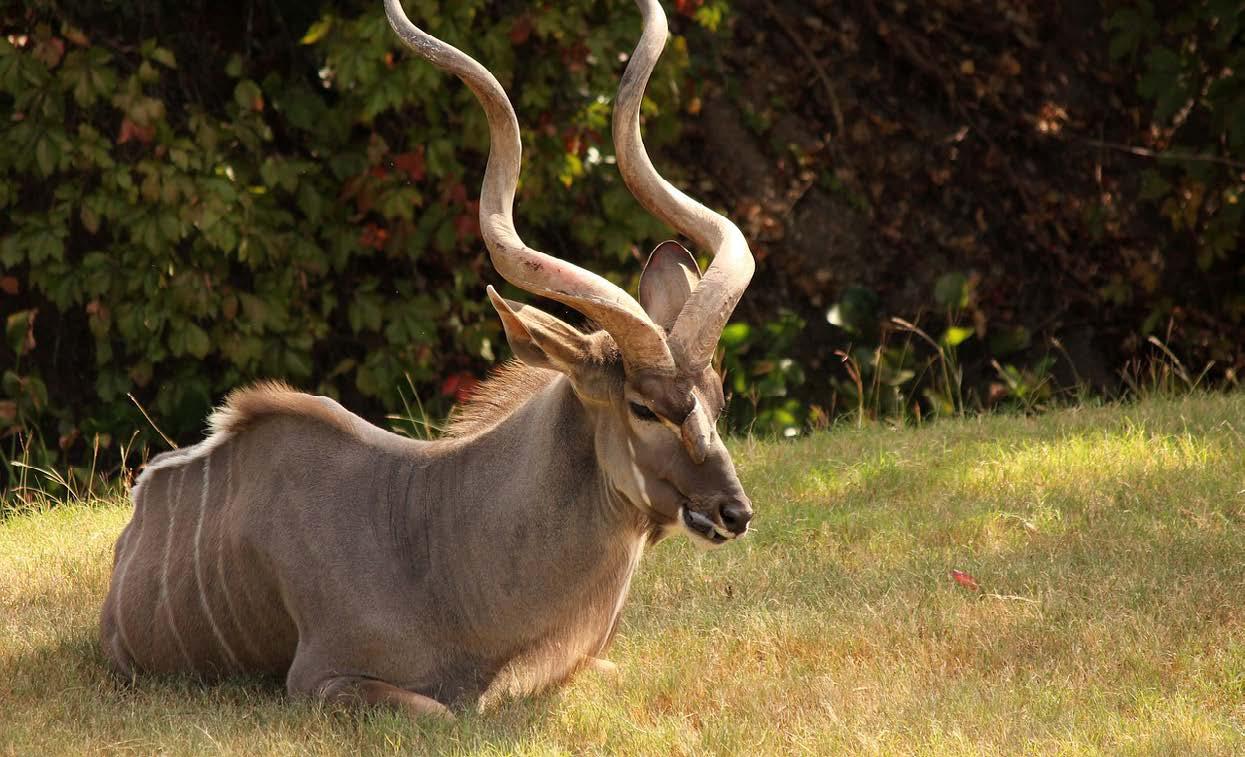
while moving slowly. Stay away, leave them alone and report the animal to the authorities.
Occurrence in Namibia
Namibia is a large country of about 824 116 square kilometres, with about 2,1 million people. Livestock farming with cattle, sheep, and goats play an important role. While communal land with subsistence farming dominates in the Northern Communal Areas (NCAs), most commercial farms are in the central and southern parts.
Namibia also has more than two million head of game which attracts tourists and trophy hunters. The game is sold as live animals or harvested for commercial meat production and onfarm use. It is therefore of the utmost importance to ensure that rabies in kudu does not spread.
Due to the incidence of foot and mouth disease (FMD), a game and livestock-proof veterinary cordon fence was built in 1961/62, which is still in place. The area to the north of the fence is referred as the NCAs. The possibility of rabies spreading from the northern areas to the central and southern areas of the country has not been confirmed.
Occurrence in wildlife
Between 2011 and 2017, rabies was detected in 17 different wildlife species, mostly in kudu, followed by jackal, then eland. Other carnivores, including

Black-backed jackal is believed to be the major reservoir of rabies in transmitted to game animals in Namibia. (Source: Pixabay)

Excessive salivation, or ‘foaming at the mouth’, is a typical sign of rabies. (Source: https://rabiesalliance.org/)
ProAgri Africa 98 35
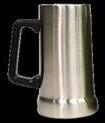


















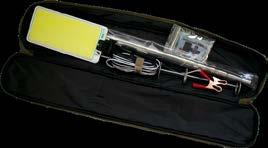

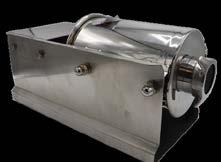


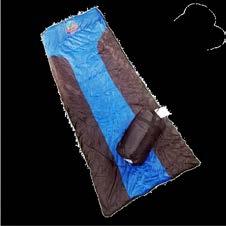














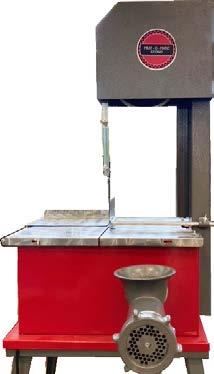


www.agra.com.na T’s & C’s apply. Agra Hyper@Lafrenz • Aranos • Gobabis • Grootfontein • Karasburg • Karibib • Keetmanshoop • Maltahöhe• Mariental • Okahandja • Okahao • Omaruru Ondangwa • Opuwo • Otavi • Otjiwarongo • Outjo • Rehoboth • Rundu • Tsumeb • Windhoek • Agra Safari Den • A. Rosenthal AVAILABLE AT ALL AGRA BRANCHES COUNTRYWIDE AS WELL AS AT A. ROSENTHAL 44995 TENTCO Sleeping Bag Cliff 190x75cm +5°C 222765 89995 AFRITRAIL Chair Rhebok Director Aluminium 130kg 201114 64995 TM PE Bench Folding 183x30x44cm 231468 1599995 MEAT-O-MATIC Econo Meat Saw U3709 349995 SD Mincer Stainless Steel 250W 222208 74999 BENNET READ Vaccuum Bag Sealer KVS102 235124 29999 SD Portable BBQ Foldable 48x27.5cm 3995 SD Braai Tong Black 35cm 217050 17995 SD Beer Mug Stainless Steel 750ml 237045 14995 SD Wine Tumbler Double Walled 360ml 237045 12995 SD Mallet Dead Blow Blue or Orange 1.3kg 222764 19995 Enamel Roaster Oval 4.5L 222768 25999 SD Happy Home Portable Gas Stove 19995 SD Cooler Bag 18 Can Camo 30x20x21cm 237013 239995 SD Sausage Filler Stainless Steel 3L 216754 489995 650W 222209 299995 7L 216752 44995 TM Jerry Can Metal 20L Black/Green/Yellow F1541/F1029/F1042 74995 35L Green/Yellow F3490/F3491 9995 TM Tarpaulin Polypropylene 175g 2x3m A1207 24995 3x4m A1190 39995 4x5m A1208 49995 4x6m A1136 GUNS AND AMMUNITION Stand a chance to WIN 1 OF 23 OUTDOOR SETS WORTH N$25 000 EACH! 14 March - 15 June 2024 39995 U-PART Hydraulic Bottle Jack 6 Ton F2910 59995 SD Camping Fishing Rod Light S/S 236800 11995 SD Lantern LED Hanging L-27 Asst. Colours 236775 135995 NITECORE Flashlight NPL10 240Lumen 92m 215274 69995 SD Tent EZ-UP 2x2m Khaki/Green 236736/7 SCAN TO VIEW OUTDOOR SETS!
bat-eared foxes, aardwolf, African wild cat, African wild dog, and leopard were affected, as well as waterbuck, blue wildebeest, Kirk’s dik-dik, oryx, and roan antelope. Most wildlife rabies cases were reported from freehold farmland where cattle cases were also reported. Rabid jackals were confirmed in many parts of the country, but only sporadically from southern regions. They were found at watering sites where they attacked cattle near farm buildings. They also attacked other domestic animals and humans.
The greater kudu (Tragelaphus strepsiceros), which occurs in woodland across Southern Africa, is particularly susceptible to the disease. Since kudus are more closely related to cattle than to other animals, it is an ongoing concern as rabies in kudu threatens the livelihoods of farmers in the NCAs as well as on commercial farms in the central and southern parts.
Distribution of cases
Namibia is aiming to control the main reservoir of the disease, namely domestic dogs, by a mass vaccination drive of dogs, especially in the NCAs.
Research done from 2011 to 2017 indicated that most cases of rabid dogs (77%) were reported in the NCAs, followed by 17% in urban areas and 3% on freehold or privately owned farms. Most cases of rabies in humans (113) were also reported in the NCAs over the same period.
The number of rabies cases among cattle were equally distributed between communal farmland and freehold farms.
The incidence of rabies in kudu, however, was mainly reported on farms in the central part of the country, where 67% of all samples tested rabies-positive. Kudu had the highest positivity rate, followed by jackal (87%).
While dogs seem to be the reservoir for rabies in the NCAs, jackals, and bateared foxes to some extent, seem to be
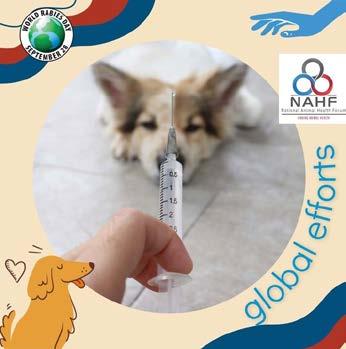
Rabies can be controlled and even eliminated if a strict vaccination protocol is followed. (Source: https://rabiesalliance.org/)

Rabid animals can either be aggressive and attack you, or be misleadingly docile and tame, but equally dangerous. (Source: https://rabiesalliance.org/)
the reservoirs in the central and southern parts where kudu and eland are mostly affected. While dogs can be controlled, control of wild animals is not possible.
In humans
It is however dog-related rabies that contribute the most to rabies in humans, who needs costly post-exposure prophylaxis (PEP) to treat. If not treated in time, humans die. The country has initiated a national control strategy towards ending human dog-mediated deaths by 2030, which is in line with international efforts to eradicate the disease.
Surveillance
Surveillance of the disease in animals is based on the reporting of all suspected cases in any species to an official of the DVS, recording of all relevant information on a specific Disease Report Form (DRF) and submission of the latter to the Epidemiology Section of the DVS.
Dog samples must also be submitted when associated with a human bite. Dog bite cases and potential exposure to rabies must be reported to the nearest state veterinary official, who will assess the rabies vaccination status of the animal. If no vaccination certificate can be produced, the dog is quarantined and if it shows signs of rabies, it is euthanised.
If a laboratory confirms rabies, the bite victim is treated free of charge at the nearest clinic. Human deaths caused by rabies mostly occur in children (67%) between five and nine years of age, with mostly males (62%) between the ages of 15 and 19.
Population density
Research found that dogs accounted for one third of all diagnosed rabies cases and that there was a correlation between human density and the incidence thereof. Rabies in livestock animals also increased with increasing
density in numbers in the NCAs. Kudu, however, is not positively linked to human population density.
Seasonal occurrence
Rabies cases in dogs, livestock and wildlife have a higher positivity rate in the rainy season during the first part of the year. Kudu cases of rabies infection peaked in March and July. Since the incubation period range from 12 to 250 days, the animals could have been infected during the hot, dry season from September to December.
In the NCAs, the trend may be the result of seasonal movement of livestock including guarding dogs. These dogs are sometimes temporarily abandoned, which could lead to interaction with infected animals.
In Zimbabwe, the incidence of jackal rabies peaked during June to August and December to May, which could be explained by the social behaviour and population dynamics of jackals.

Animals and Rabies (2022) Centres for disease control and prevention
https://www.cdc.gov/rabies/animals/ index.html
An update on rabies in South Africa (2021) Communicable Diseases Communiqué December 2021, Vol. 20 (12) https://www.nicd.ac.za/wpcontent/uploads/2021/12/An-updateon-rabies-in-South-Africa-2021.pdf
Dorfling, C. (2024) Hondsdolheidgeval in Gqeberha bevestig, maar gevalle neem af https://www.netwerk24.com/ netwerk24/nuus/aktueel/hondsdolheid-geval-in-gqeberha-bevestigmaar-gevalle-neem-af-20240110
Namibia’s battle against rabies: a One Health success story. (n.d.) World Organisation for Animal Health https://www.woah.org/en/article/ namibias-battle-against-rabies-aone-health-success-story/
Streicker, D.G. (Ed) (2019) Ecology and epidemiology of rabies in humans, domestic animals and wildlife in Namibia, 2011-2017
PLoS Negl Trop Dis. 2019 Apr; 13(4): e0007355.
Published online 2019 Apr 16. doi: 10.1371/journal.pntd.0007355
PMCID: PMC6486109
PMID: 30990805
https://www.ncbi.nlm.nih.gov/pmc/ articles/PMC6486109/
Van Rooyen, C. (2023) Hondsdolheid neem toe onder koedoes in Namibië https://www.landbou.com/landbou/ bedrywe/diere/hondsdolheid-neemtoe-onder-koedoes-20240301
ProAgri Africa 98 37
Zimbabwe agriculture mechanisation-from Belarus with love
Zimbabwe's agriculture industrial revolution has gone a notch up with the confirmation of more support from Belarus.
It was announced early February by Zimbabwe's Agriculture Ministry that the Southern African country would get four thousand tractors from Belarus this year to help drive its food production ambitions.
Once a net food producer, Zimbabwe is on a mission to return to its status as a regional breadbasket but has in recent years failed to achieve its stated goals.
Factors that include erratic rainfall induced by climate change have stalled grain production, while poorly equipped farmers have routinely recorded large scale crop failure.
Against that background, mechanisation has been seen as a major player in the projected rapid expansion of especially grain production.
Already, Zimbabwe has received two thousand tractors, combine harvesters and related mechanised agriculture equipment in the past three years, according to the Agriculture Ministry.
In recent years, Zimbabwe has been on a massive agriculture mechanisation drive, with officials touting the Belarus support as part of efforts to create a multi-billion dollar agricultural sector.
Edwin Zimunga, a Director in the Lands, Agriculture, Fisheries, Water and Rural Development Ministry, told state media that Zimbabwe is seeking to modernise its agriculture sector, a
by Marko Phiri

message that has also been preached by President Emmerson Mnangagwa.
"The range of equipment that was delivered through the government-togovernment programme covers issues pertaining to land preparation and tillage, planting and sowing, chemigation, fertigation, as well as weeding,” Edwin said.
“They also cover issues around harvesting through modern combine harvesters, and post-harvest agro-processing is also not left out," he added.
But for enthusiastic farmers rubbing
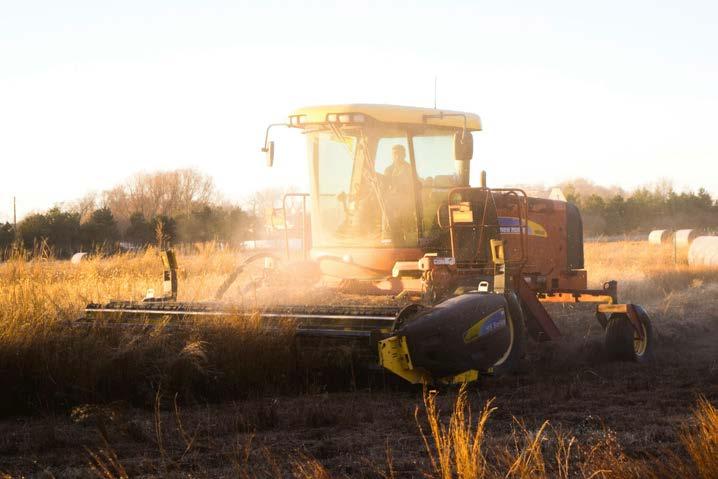
their hands in anticipation of the largess, this machinery does not come for free, much like farming inputs such as maize seed and fertiliser.
"All this equipment is being accessed through farmer-friendly banks: CBZ, AFC Land Bank, Women’s Bank and Youth Bank. Farmers need to make an initial payment of only 15 percent and pay the balance within the preferred period of time as agreed,” Edwin said.
Yet in a country where banks have historically been reluctant to relax
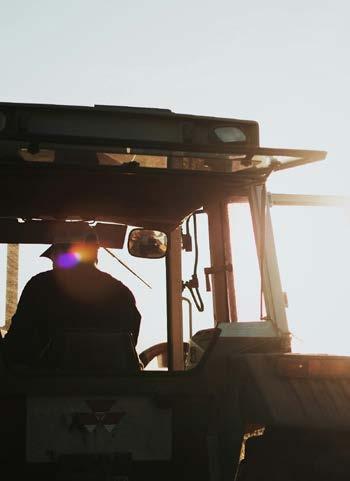
Zimbabwe 38 ProAgri Africa 98

agriculture loan terms, there are concerns that the equipment could gather dust.
Farmers’ unions have previously complained that banks are unwilling to gamble on agriculture finance, citing the fickle nature of a sector that is largely rain-fed.
In the absence of rains, banks do not get their returns, so it goes.
In the years that Zimbabwe has upped the ante in the mechanisation of agriculture, the country has continued to struggle with meeting its grain production targets for example.
Other agriculture sectors such as horticulture have also floundered in their efforts to turn the corner and reclaim peak production seen before the land reform programme.
Critics note that in the absence of sustainable agriculture models including finance and expertise, such highly mechanised industrial size equipment, could fall flat in its ambitions to turn around the country's efforts to realise a thriving green economy.
The country's agriculture has suffered from lack of agriculture infrastructure such as irrigation and dams on which to anchor its farm mechanisation drive, but officials remain convinced that the Belarus equipment is just what the doctor ordered.
According to the Agriculture Ministry, the country has over thirteen thousand tractors, three hundred combine harvesters and a host of smaller mechanised agriculture equipment.
But researcher and development expert Ian Scoones of the UK's Institute of Development Studies has questioned the reach of such investments.
"Are these the styles of mechanisation that small-scale farmers in Zimbabwe want? Probably not," Scoones
wrote in his blog late last year.
"Clearly there is a growing demand for mechanisation – for production, processing, transport and more – but the technologies need to be appropriate in scale, capital requirements and the ability to repair when they go wrong," says Scoones who has researched and written extensively on Zimbabwe agriculture.
But fears of breakdowns and repairs have been addressed as part of the Belarus equipment agreement where a local dealership has been opened with specific focus on the maintenance of the giant agriculture machines.
As part of the agreement, Belarus technicians and experts will train local engineers to ensure farmers are not found wanting in the event of tractors and combine harvesters breaking down.
It remains to be seen in the long run if the rapid mechanisation project will deliver Zimbabwe's ambition to compete at a global level regarding food production.


ProAgri Africa 98 39
There is a growing demand for mechanisation in Zimbabwe, including tractors and harvesters.
Manufacturer of largest diameter PVC pipes in Zambia!





ProAgri Africa 98
our
imperialplasticsip@yahoo.com | Website: www.imperialplast.com Address: No. 456A | Kafue Road, Shimabala, Lusaka - Zambia
ZAMBIA
All
PVC Pipes are
Supplying
WITH HIGH-QUALITY PVC pipes for agriculture Irrigation HDPE Polypipes, Sewer/Waste Pipes, Garden Hose Pipes, UPVC Pressure Pipes, PVC Borehole Casings
Boars and sows breed hope for aspiring Zimbabwe farmers
by Marko Phiri
Zimbabwe has seen a different kind of career move with professionals abandoning their posts to take up farming.
Ever since the country embarked on the land reform programme where ordinary Zimbabweans with no farming experience got pieces of land, thousands have taken up agriculture.
From civil servants to private sector employees, the land reform programme spawned a trend where professionals have left their office jobs to get their hands dirty as full-time farmers.
The promise of steady incomes in the agriculture sector has had different outcomes as these professionals seeked livelihoods outside what is considered "formal employment".

One of the areas that have witnessed growing interest is piggery.
Like other sectors, the pork industry has seen its fair of challenges with the closure of some of the country's major pig processing companies.
Yet for unskilled aspiring farmers, pigs are seen as relatively easy to breed.
This has attracted former civil servants such as Lovemore Siziba who left his government job a few years ago.
Many people believe pigs "feed themselves" and are prolific breeders, but Lovemore says he has learnt the hard way that popular beliefs do not always apply when in a business such as his.
"I got into piggery because of popular beliefs that these animals are easy to keep or raise," Lovemore said.
Starting off with one boar and four sows, Lovemore imagined he would sit back and watch his pigs multiply but that is not how it works.
Operating from a piece of land he got from government on the outskirts of Bulawayo, it meant he had to be hands-on.
When he was not able to be on the farm, he hired assistants to take care of the project.He was to later learn rather painfully that this was and is no way of doing business.
"You need to keep the pigsty clean. You need to feed them, you need to monitor their health," he said after three of the sows mysteriously died.
"I have come to appreciate that raising livestock is a specialised field much like everything else," he added.
He has since started afresh with better focus, better research, and a zeal
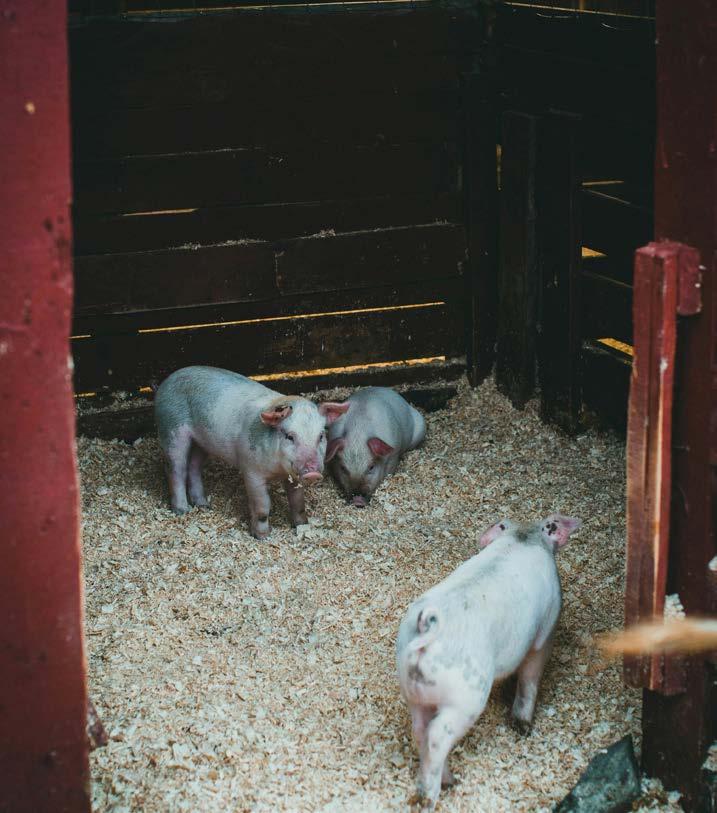

to make sense of why he left his government job to go into full-time piggery.
"When you have land, you are better off because you do not have to worry about the long term plans of your project," Lovemore said.
"The problem is how you use the land and what projects you embark on," he added.
Many Zimbabweans who received land under the government programme, have been criticised for under-utilising the land, and the authorities have in fact confiscated and re-allocated the land.
Mavis Hlabangana is another govern-
ment employee who left her post to take up full-time farming in her government allocated piece of land.
She also took up piggery, she says, because she did not think it required a lot of resources.
"It has always been the assumption that pigs just roam and eat whatever they come across that's why they are fat," Mavis said.
"But if you want to raise pigs as a business, I have learnt that is the last thing you want to do. These animals need proper feeding," she said.
After many false starts, she says she
ProAgri Africa 98 41
It is important to keep your pigs healthy by keeping the pigsty clean. (source: Pexels)



A Falcon Slasher is built to last and is capable of coping with the tough conditions unique to Africa


Zimbabwe 42 ProAgri Africa 98 En me anal sis Nematode co nt and iden fica on Organic carbon content The abo e are all indicators of soil microbial ac it . OMNIBIO LAB SERVICES Omnia Fertilizer Zimbabwe (Pvt) Ltd 8 Paisley Road, Workington, Harare. P.O. Box BW 736 Borrowdale, Harare. Tel: +263 772 142 707, +263 772 186 175 ZA-V – A world of precision Mounted spreader I 1,700 ℓ - 2,000 ℓ I 10 m – 36 m ISOBUS,
spreading
it
fertiliser spreader in its class. THE F50/150/4 FALCON SLASHER
cell technology (Profis) and border
makes
a state-of-the-art
info@falconequipment.co.za | www.falconequipment.co.za
+27
All Amazone implements imported by AmaTron 4 ISOBUS terminal For more info scan here. myAMAZONE for more performance www.amazone.net/myAMAZONE for Innovation | amazone.net Falcon_ProAgriAgri4All.indd 1 2023/10/31 09:30
Tel:
(0) 33 330 4764
has established networks with other pig breeders to share tips on how to derive value from their projects.
"For example, I have learnt that butcheries do not just buy your pigs, but they look for other things that many people do not even think about. Fat to meat ratio, the colour of the pig's coat, inspect the feet, the ears and so on. All that is possible from proper care – not just raising the pigs like they do in rural areas," Mavis says.
Sustaining these livestock operations has meant relying on your own resources, Mavis says, despite bodies such as the European Union supporting registered pig producers with training and other assistance to ensure quality pork production.
"You must have some sort of backup plan. It doesn't make sense to leave your regular job and embark on a project like piggery and then fail before you even start," she said.
For her, resources have come from diaspora remittances that have enabled


her to try and professionalise her piggery project with properly ventilated pigsties, medicines, and feed.
"If properly done, there is no reason for an office job," she says.
Yet hers is one of a few stories of boars and sows breeding hope as she tells of other colleagues who have found the going tough and abandoned their government-issued land altogether to return to their office jobs.
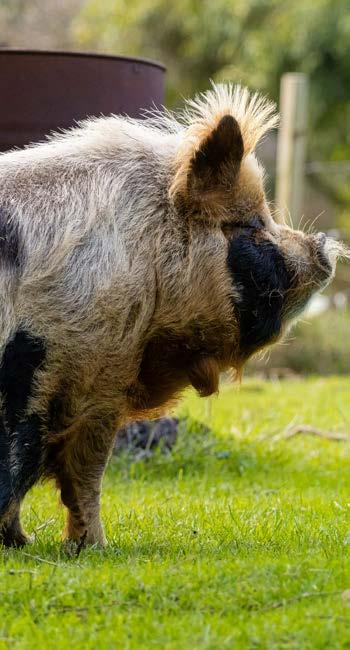

ProAgri Africa 98 43
Even though pigs are generally fat, it does not mean they can eat just anything they come across. (source: Pexels)


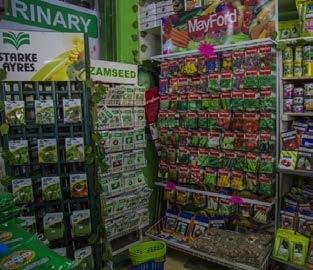







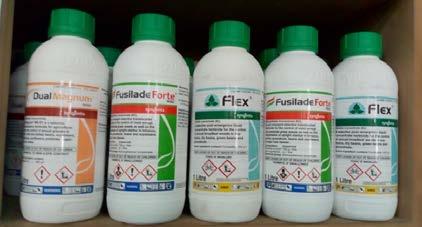








44 ProAgri Africa 98 Farmers Barn Ltd. Address Mumba Road branch Tel: +260 211 225 352 Cell: +260 977 518 635 Farmersbarn_ltd@hotmail.com Plot 51, Chiparamba Road, Lusaka, Zambia +260 975 386 240 Mumba Road, next to Uniturtle, Lusaka Distributors of Dekalb maize seed DKC 80-33 Tamanga Early maturing DKC 90-89 Ngao - Ngao Medium maturing DKC 80-53 -DK777 Shoma Medium maturing All types of hybrid maize seed | Vegetable seeds | Soya seeds & more Protect your crops | Fungicides | Herbicides | Insecticides We care about your livestock and pets Animal Feed & medicine The home of ALL FARMERS Hand tools | Protective equipment | Irrigation equipment NOW OPEN IN CHONGWE! Along Great East Road, opposite Deliverance Church
 by Marko Phiri
by Marko Phiri
Zimbabwe's smallholders are notorious for resisting appeals from the agriculture ministry to grow small, drought-resistant grains. They have always planted maize and weaning them from that tradition has proven difficult.
While extension officers warning about changing climate patterns continue promoting small grains such as sorghum, pearl millet, and finger millet (rapoko) this has found no takers on a large scale.
With the Zimbabwe government increasing its agriculture industrialisation program, small grains have been left behind in the commercialisation of food production. Smallholders and subsistence farmers typically grow small grains for their own domestic consumption, while commercial small grains remain of little economic value.
This is seen in shortages in supermarkets of nutritional food such as sorghum meal recommended for people with various medical conditions.
Commercial farmers driving the country's maize production have sometimes been critisised for choosing to grow maize exclusively for stock feed at a time when the country's grain reserves that feed the nation were low. They also did not particularly favour small grains.
However, in recent years the promotion of small grains has attracted other players such as faith-based humanitarian agencies who are responding to the effects of climate change.
They are assisting rural smallholder subsistence farmers to navigate the climate change and food security nexus using methods that rely on traditional knowledge.
As part of efforts to address hunger and provide long term responses to the food security crisis, small grains are slowly being embraced under the guidance of these agencies.
The agencies are working with different rural communities across the country's provinces including the historically low-rainfall south-west where subsistence farmers are warming up to small grains.
According to officials, smallholders
getting assistance in the form of adopting millet, sorghum, and other small grains are embracing the crops promoted by their faith-based affiliations.
"It makes sense to approach these issues from the perspective of already existing religious networks," one church official said.
"Because we already work and fellowship together, putting the message of climate change and the need to adapt becomes relatively easy," the official added, asking not to be named because of official ethical considerations.
Zimbabwe's agriculture activities have for years been promoted by a government whose politics have shaped people’s reaction to messages of development.
Because there have been accusations of politically selective farm input and food assistance, the message of climate change and adaptation has become a victim of resistance by skeptical audiences, researchers say.
Small grains remain a difficult subject to preach despite all evidence of the need for climate resilient crops, and extension workers have their work cut out.
"We are happy to get help and receive knowledge from our church regarding embracing new types of crops. We have been reluctant to adopt this as we have not been getting enough knowledge," said Getrude Lubimbi, a subsistence farmer in low rainfall Matebeleland South.
"I received seeds last year from my church and am eager to see what we, as a family, will get from the fields. I think this is better than getting free mealie meal as it ensures we are working the fields, doing what we have always done all our lives," she said.

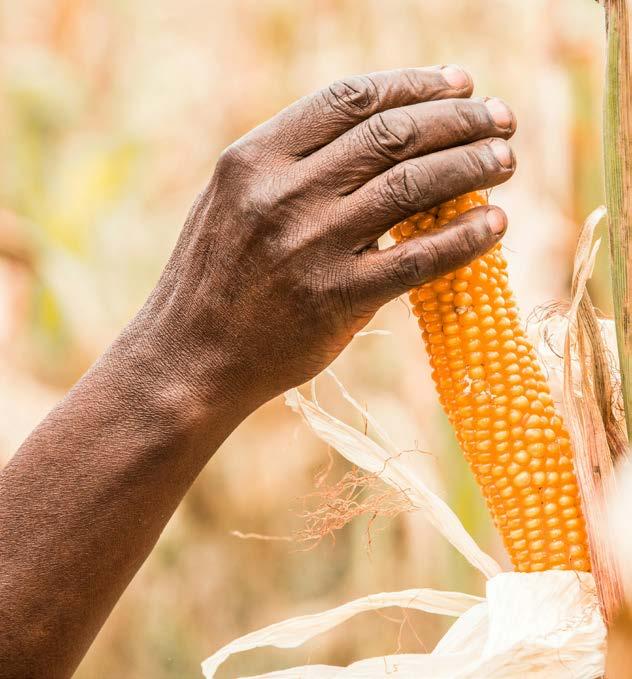

ProAgri Africa 98



Zimbabwe
The country’s provinces have remained stuck in a food assistance loop, with agencies such as the World Food Programme noting that poor agricultural performance will see a continued need for food relief.
Getrude is not alone in embracing the new message of adopting small grains preached by her faith-based agency.
Other subsistence farmers have also expressed hope that the challenges brought by poor rains can be overcome through growing crops other than the staple maize.
"When my pastor mentioned that they were bringing people knowledgeable in climate change research and different crop varieties I thought it was time to learn more about this stuff," said Naison Bhebhe, a subsistence farmer in Matebeleland North.
"It is not like we have not heard about small grains. People have just not been interested," he said.
And this is a complaint that has been regularly raised by the agriculture ministry in a country where some smallholder farmers continue to favour cash crops over promoting food security efforts.
As the country continues to seek ways to lift smallholders out of cyclical crop loses, faith-based humanitarian agencies are stepping in the breach, complimenting government efforts to boost food security.
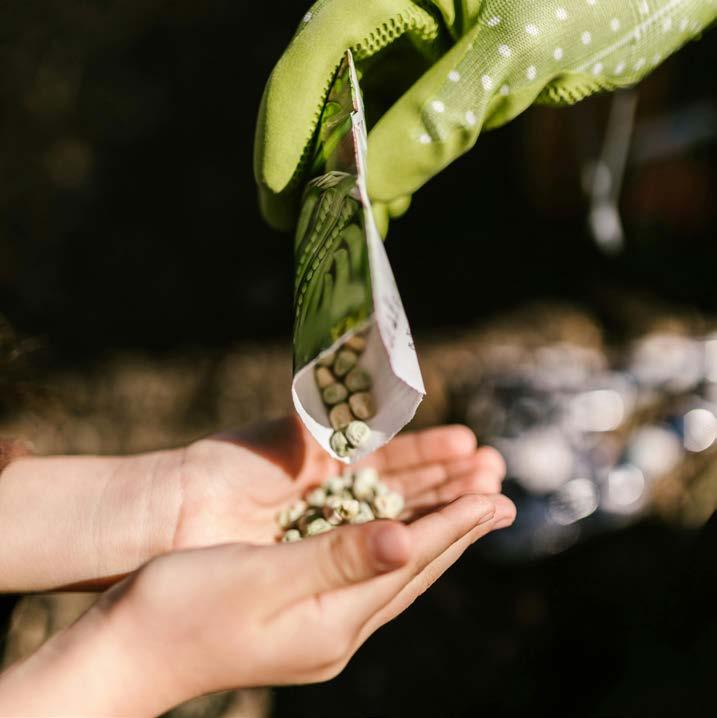
Receiving
Lime Your Fields, Get Better Yields

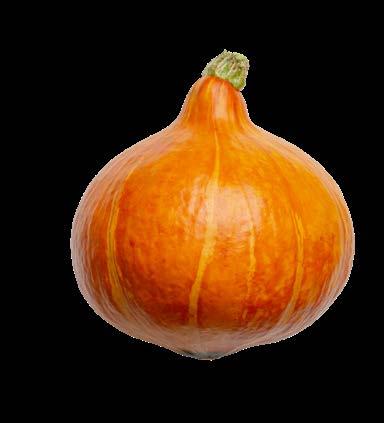





ProAgri Africa 98 47 Also available:
FOR EACH TON OF FERTILISER, THE SOIL NEEDS ONE TON OF LIME
seeds is a way of ensuring that someone can learn how to work the field.



















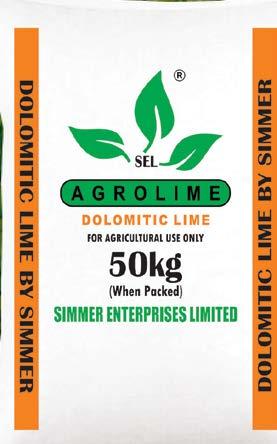












www.simmerlime.com

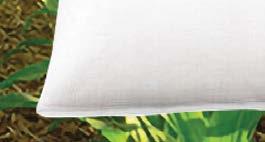




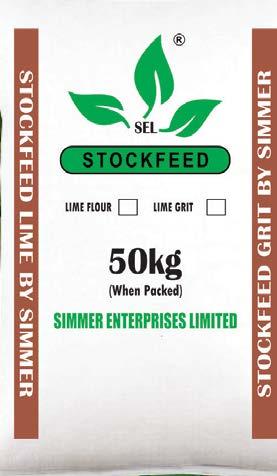














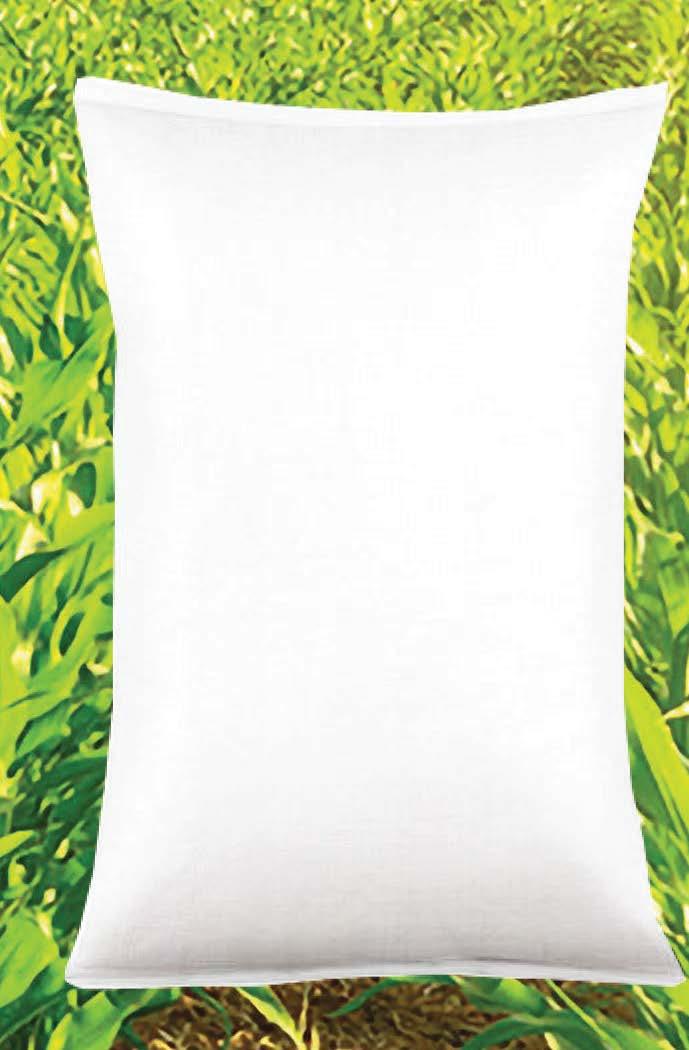

LIMITED Agriculture Lime, Dolomitic Lime) Stockfeed Lime Inputs, Gypsum types of fertilizers SIMMER agrolime.zambia@gmail.com agrolime.simmer@gmail.com P.O. BOX 33201, STAND No.12609, CHINIKA INDUSTRIAL AREA, LIMITED Agriculture Lime, Dolomitic Lime) Stockfeed Lime & Grit Inputs, Gypsum types of fertilizers SIMMER ENTERPRISES LIMITED Manufacturers of Agriculture Lime, (Calcitic Lime & Dolomitic Lime) Calcium Carbonate, Stockfeed Lime & Grit Suppliers of Agro Inputs, Gypsum (Calcium Sulfate) & all types of fertilizers
+260 974 573 758 agrolime.zambia@gmail.com +260 978 592 390 agrolime.simmer@gmail.com +260 211 286 424
P.O. BOX 33201, STAND No.12609, KATANGA ROAD, CHINIKA INDUSTRIAL AREA, LUSAKA - 10101 ZAMBIA




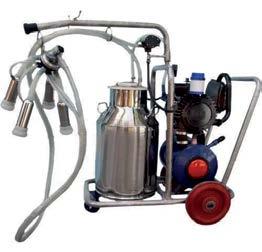
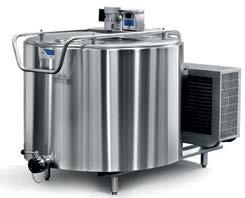

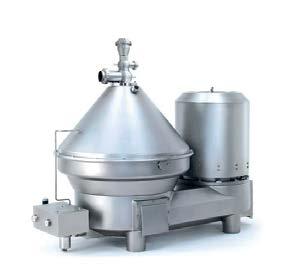



ProAgri Africa 98 49 lflex.co.za Gert Burger (gert@lflex.co.za) 083 267 2635 | admin@lflex.co.za Office number | 079 771 1822 No 30 Pittsburg Street, Cnr Apex Street, Apex Industrial, Benoni We supply tailor-made solutions for your rubber hose requirements. RUBBER HOSE PIPES DIRECT FROM THE MANUFACTURER FOR THE MINING & AGRICULTURAL INDUSTRY info@agri-cm.com +260 211 232 072 Mungwi Center Next To Boarder & Timber Mungwi Road BULK MILK COOLER TANKS FROM 500L - 5000L CATTLE MILKING MACHINE MILK SEPARATOR DAIRY EQUIPMENT DAIRY EQUIPMENT info@agri-cm.com +260 211 232 072 Mungwi Center Next To Boarder & Timber Mungwi Road BULK MILK COOLER TANKS FROM 500L - 5000L DAIRY EQUIPMENT DAIRY EQUIPMENT info@agri-cm.com +260 211 232 072 Mungwi Center Next To Boarder & Timber Mungwi Road BULK MILK COOLER TANKS FROM 500L - 5000L CATTLE MILKING MACHINE MILK SEPARATOR DAIRY EQUIPMENT DAIRY EQUIPMENT info@agri-cm.com +260 211 232 072 Mungwi Center Next To Boarder & Timber Mungwi Road BULK MILK COOLER TANKS FROM 500L - 5000L CATTLE MILKING MACHINE MILK SEPARATOR STAINLESS STEEL MILK CANS 5L - 40L DAIRY EQUIPMENT DAIRY EQUIPMENT info@agri-cm.com +260 211 232 072 Mungwi Center Next To Boarder & Timber Mungwi Road BULK MILK COOLER TANKS FROM 500L - 5000L CATTLE MILKING MACHINE MILK SEPARATOR DAIRY EQUIPMENT DAIRY BULK MILK COOLER FROM 500L - 5000L CATTLE MILKING MACHINE STAINLESS STEEL MILK CANS 5L - 40L DAIRY EQUIPMENT DAIRY EQUIPMENT info@agri-cm.com +260 211 232 072 Mungwi Center Next To Boarder & Timber Mungwi Road BULK MILK COOLER TANKS FROM 500L - 5000L CATTLE MILKING MACHINE MILK SEPARATOR DAIRY EQUIPMENT DAIRY EQUIPMENT Dairy Equipment BULK MILK COOLER TANKS FROM 500L - 5000L CATTLE MILKING MACHINE MILK SEPARATOR STAINLESS STEEL MILK CANS 5L - 40L



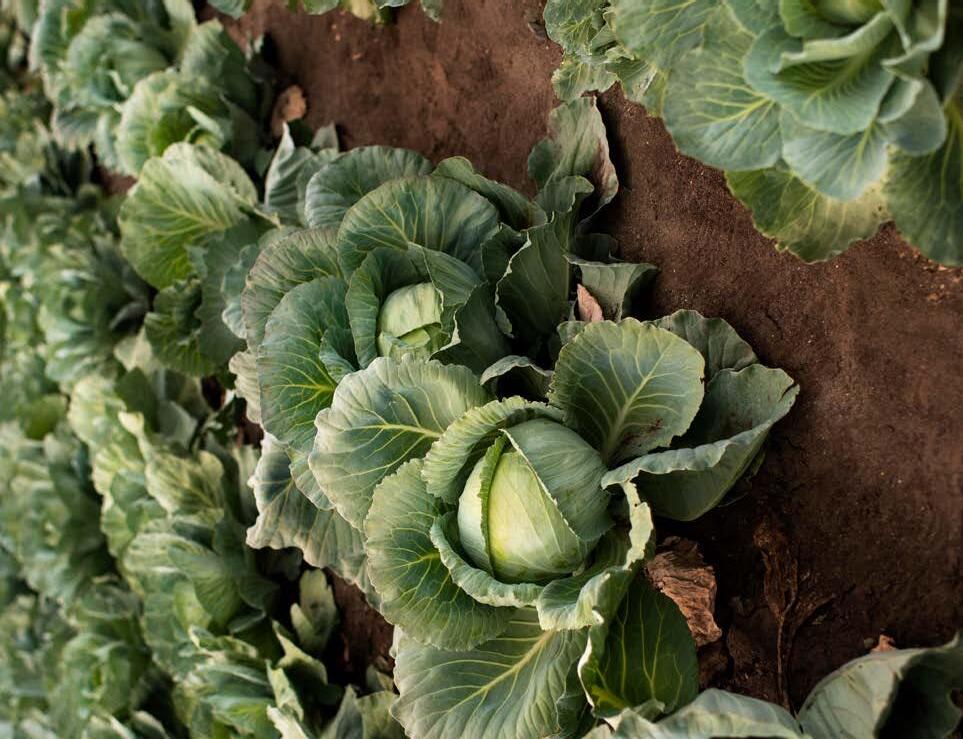

Zimbabwe 50 ProAgri Africa 98 Your #1 choice for fertilizer Well-fed plants are healthier and more productive. Give your crops a boost, with our wide range of fertilizers. +260 977 610 498 | +260 963 482 728 | +260 960 997 589 marketing@fsgzambia.co.zm | sale@fsgzambia.co.zm www.fsgzambia.co.zm Suppliers of the farmers input support programme Horticultural Fertilizer SUCCESSFUL FARMERS LOOK BENEATH THE SURFACE
S mallholder farmers in Zimbabwe who rear livestock are counting their losses after an extended dry season decimated pastures.
Like many smallholders, livestock breeders rely on rainfall for the feeding of their cattle, goats, donkeys, and everything else.
However, with the country reeling under an unusually long dry season, the fattening of cattle solely by way of natural pastures on rolling green plains and abundant water sources remains nothing but a distant memory.
Silibaziso Mthembu is a dedicated woman. She keeps a small herd of cattle she inherited from her deceased husband.
"If he was still alive he would be disappointed by how thin the cattle are," Silibaziso said.
"These past few years have been particularly bad, but what we are seeing now is worse. The cattle have nothing to chew," she said.
Where her husband hired herd boys who took the livestock to pasture, she says she cannot afford to pay for extra help to ensure her herd gets enough food.
Amid such gloom, other smallholders are selling their cattle to stave off losses. But that has meant selling at prices below market value as the cattle have lost significant weight.
Goats may provide an answer
by Marko Phiri

"The cows are thin and people with money to buy stock feed are buying the cattle for a song," said Charles Mlangeni, a retired civil servant in Lupane, about 120 km north of Bulawayo.
The southwest of the country is known for cattle breeding but its low rainfall geographical location is haunting smallholders who cannot afford stock feed.
"It is better to sell off some of the herd and raise enough money to buy feed for the remaining cattle, but many people here do not want to sell," Charles said.
Cattle have historically been seen as a sign of wealth in many rural parts of Zimbabwe, and owners would choose to rather go hungry than sell their cows. Yet the reality of climate-induced lack of pastures may soon persuade smallholders to reduce their herds.
Older farmers still remember the grief of the 1992 drought which decimated thousands of cattle, with the government struggling to support smallholders to save the national herd.
During the 2019 drought, the Food and Agriculture Organisation said Zimbabwe lost more than 21 000 head of cattle. The FAO noted that cattle starved to death “due to depleted grazing and diminished wate r sources.”
In response to the 2019 drought, the UN agency launched the Zimbabwe Livelihoods and Food Security Programme (LFSP) to help farmers with fodder production and supplementary feeding for cattle.

Thousands of farmers were taught how to produce fodder crops such as velvet beans, leucaena, and lablab. Yet only five years later, cattle owners such as Charles find themselves facing the same threats of losing their livestock.
They are watching cattle that should serve as a source of wealth lose weight and value at a time when commodity prices are going up.
Last December, the Agriculture and Rural Development Advisory Service (ARDAS), a state owned enterprise, reported that 7 600 cattle had died across the country during the cropping season due to the direct effects of El Niño.
More than 2 400 cattle had died in one week, ARDAS r eported.
It appeared the dec imation of pastures had not been foreseen to enable the implementation of strategies to counter the massive loss of cattle.
In the past, farmers grew enough maize and other grains to divert some to feeding their cattle, but the ongoing drought has meant that farmers are more concerned about f eeding themselves after poor grain harvests.
While the government has routinely claimed it ha s enough grain reserves, the agriculture ministry still has to confirm if excess grain will be channeled towards saving starving livestock.
In the meantime, well-resourced farmers are seeing an opportunity purchasing the starving cattle, putting them on fattening schemes and reaping the benefits.
According to the ministry of agriculture,
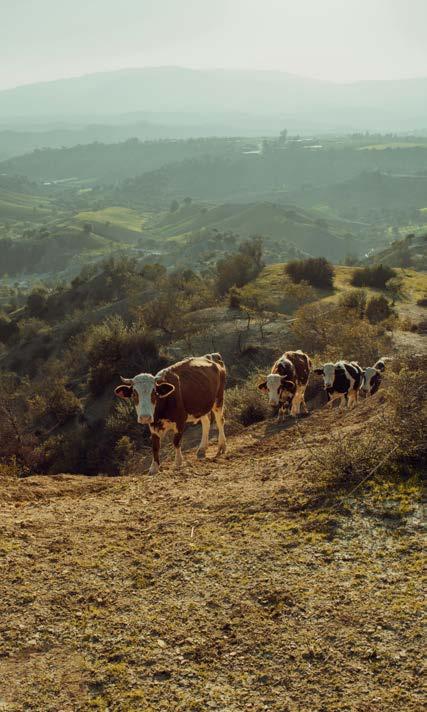
ProAgri Africa 98 51
The drought has meant selling cattle at prices below market value as the cattle have lost significant weight. (source: Pexels)

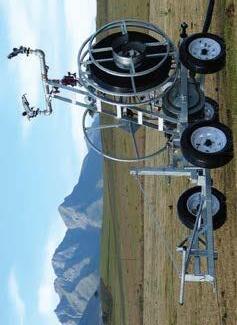








Zimbabwe ProAgri Africa 98
300 4X4 HEAVY DUTY AGRICULTURAL IRRIGATOR CLUBMAN/ FARMER 100 LIGHT DUTY AGRICULTURAL IRRIGATOR Mobile irrigation systems to irrigate Africa SPORTSMAN/ CROPMAKER 120 LIGHT DUTY AGRICULTURAL IRRIGATOR CANE MASTER 300 Choose from our wide variety! RAINMAKER 200 4X4 HEAVY DUTY AGRICULTURAL IRRIGATOR GREENKEEPER/ FARMER 200 LIGHT DUTY AGRICULTURAL IRRIGATOR NAMIBIA: Aqualand Irrigation Erwin Schimper: +264-62-500-169 +264-81-129-0509 Erwin@aqualand.com.na l www.aqualand.com.na ZIMBABWE: Water Wright Irrigation Office: +263 242852155 Sales: Farai Gava +263 772265639 sales@wwi.co.zw
RHINO



the country has only recently begun to rebuild its national herd after years of stagnation. Yet there are fresh challenges brought by delayed rains, and the extended dry season could reverse those efforts.
In response, Lands, Agriculture, Fisheries, Water and Rural Development Permanent Secretary Professor Obert Jiri has advised farmers to breed goats instead.
“We are promoting the production of goats and sheep so that at least we stand a chance to mitigate the vagaries of climate change,” Obert told state media last December.
“Farming with small stock is climate smart. We have the Presidential Goat Scheme and poultry programme. We are targeting six million head this year and by 2025 our target is eight million. We have particular programmes of trying to climate-proof our livestock through the adoption and promotion of small stock,” he says.
Whether farmers who view cattle as a source of wealth will heed that advice remains to be seen.

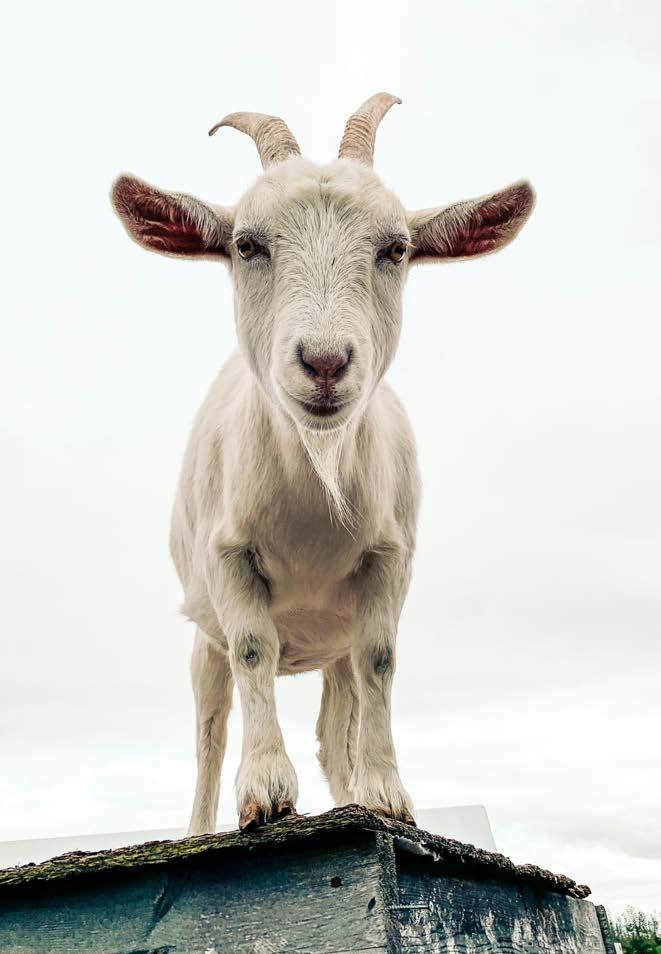
ProAgri Africa 98 53
With Zimbabwe’s unusually long dry season, the fattening of cattle solely by way of natural pasture and abundant water sources remains nothing but a distant memory. (source: Pexels)
Last December, the Agriculture and Rural Development Advisory Service (ARDAS), a state owned enterprise, reported that 7 600 cattle had died across the country during the cropping season due to the direct effects of El Niño. (source: Pixaby)
Farming with goats instead of cattle may be a climate wise decision. (Photo: www.zagp.org.zw)
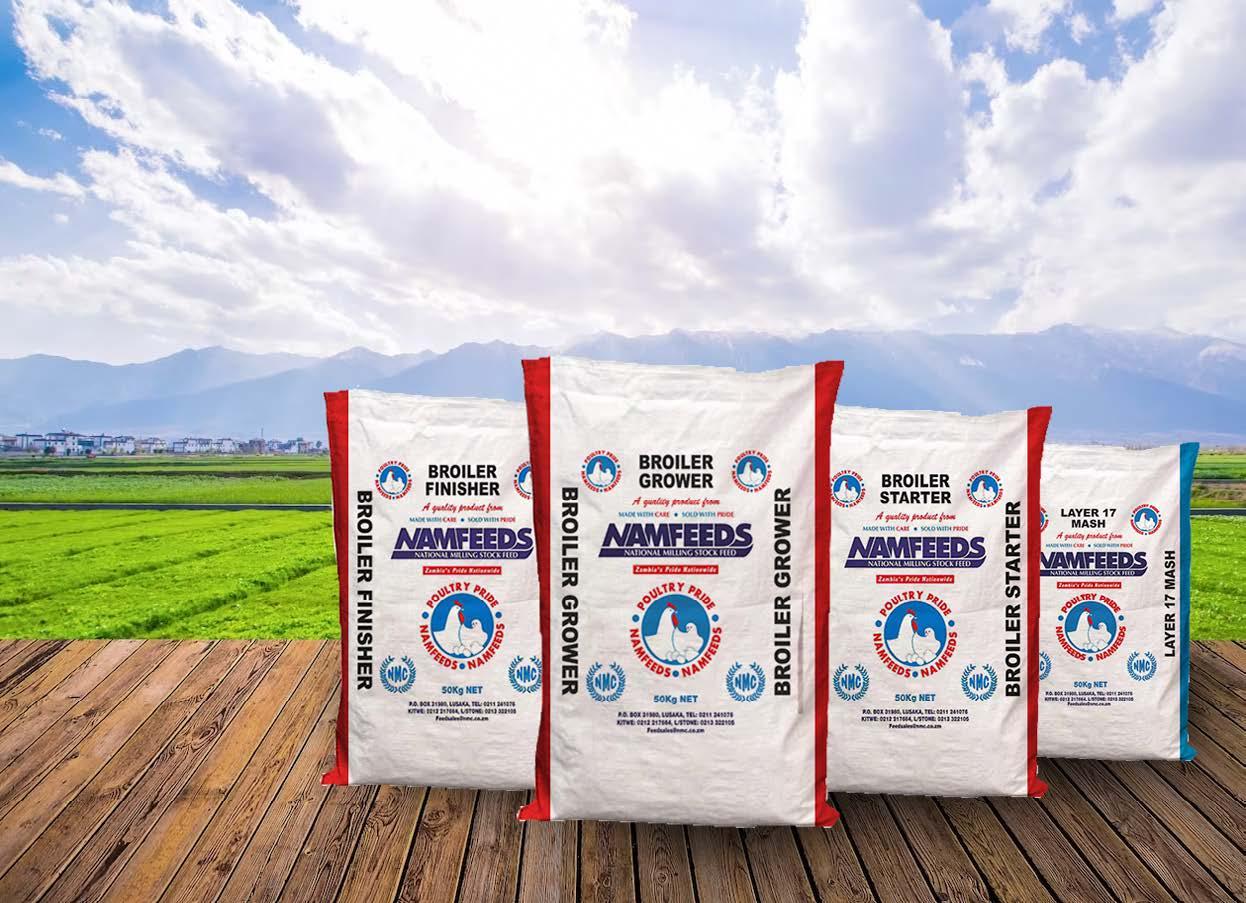

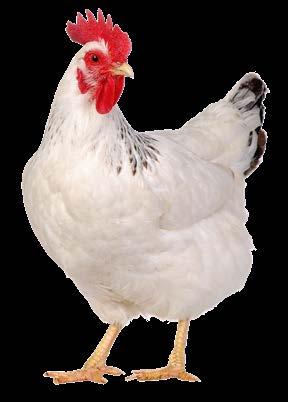
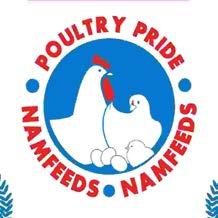





ProAgri Africa 98 LSK H.O- Plot sub v / farm 403a Lilayi road, Lilayi P.O Box 31980 Lusaka + 260 967 640 126 +260 961 580 785 feedsales@nmc.co.zm LSK- MALAMBO ROAD • Malambo • Kabwata • Showgrounds • Chelstone • Kalingalinga • Chilenje • Makeni • Westgate • Matero • Zani Muone • Zingalume • Chilanga • Libala South ALSO AVAILABLE IN: Eastern, Western, Central, Southern, Copperbelt, Northern, & North Western Provinces YOU CAN TRUST BROILER GROWER | BROILER FINISHER | BROILER STARTER | LAYER 17 MASH PREMIUM FEED





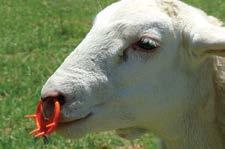

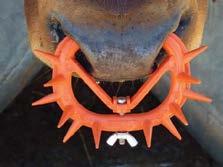


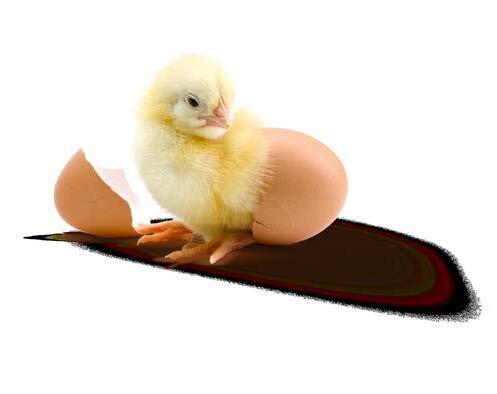


ProAgri Africa 98 55
Next to the
No
to
PO Box
South Africa Tel: +27
+27
+27
NoseRing® is available
Zamhatch Limited is a subsidiary of Zambeef Products PLC With a low mortality
our healthy chicks will grow to grow your money.
please contact our sales team at your nearest Novatek outlet or Zamhatch Agent. L OWEST MOR T YTILA ETAR •
NoseRing® Wean with ease | No stress |
mother NoseRing • Wean with ease •
stress • Next
the mother
1806, Vryburg,8600,
(0)53 927 4999 Cell:
(0)82 459 9451 E-mail: judy@nosering.co.za www.nosering.co.za Tel:
(0)53 927 4999 Cell: +27 (0)82 459 9451 judy@nosering.co.za
at Livestock Services, Lusaka –Pamodzi Highway, o Nangwenya Road, Showgrounds; Tel: 0211-254497 / 254024; E-mail: admin@livestock.co.zm www.nosering.co.za
rate,
For further assistance,

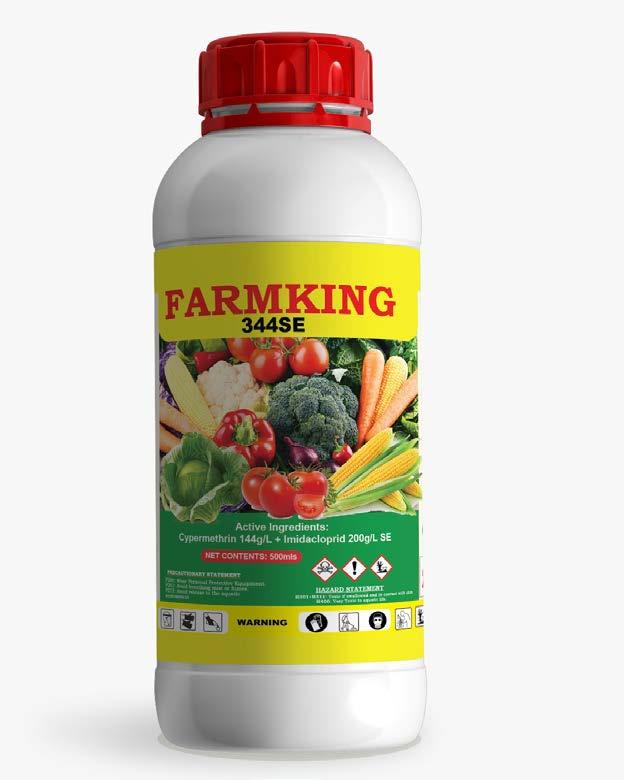
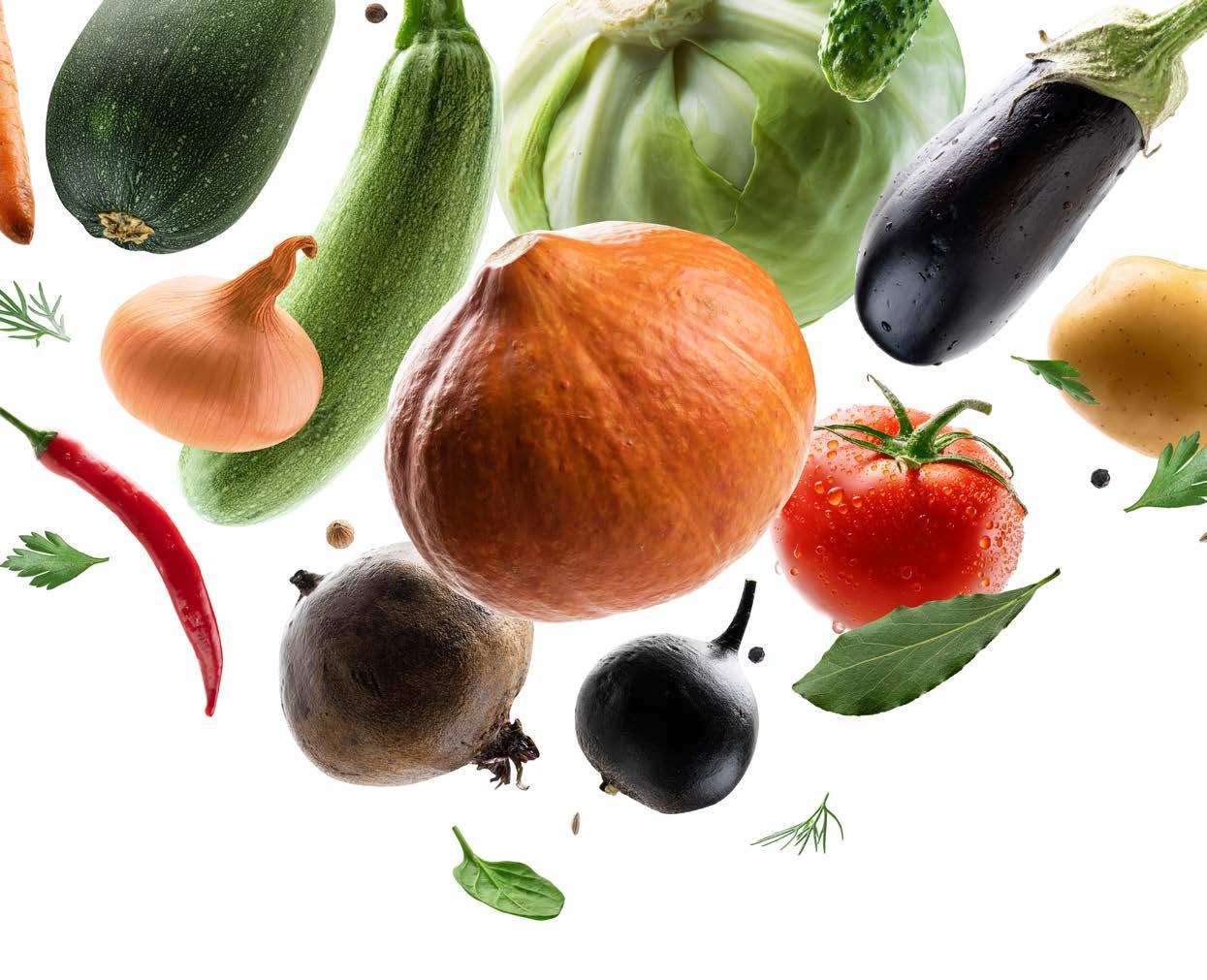

“KING” the in protecting your crops!
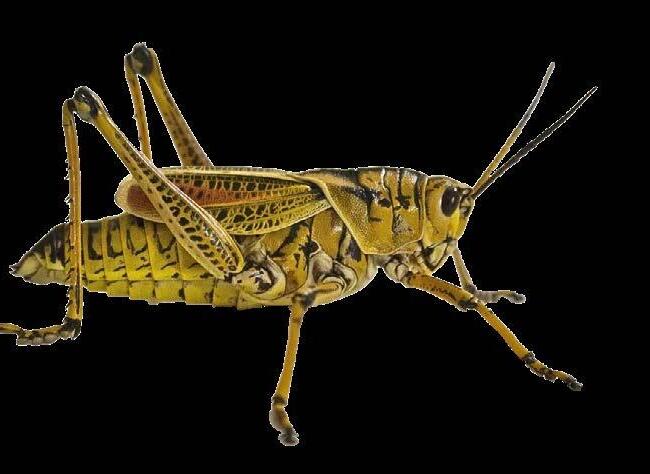

A generational broad spectrum Insecticide that controls insects in the soil and those that attack the crop.
AVAILABLE AS A LONG SOLUTION TO NUISANCE INSECTS IN CROPS .
AVAILABLE the your
A






















BUTTERFLY & WAFER VALVES
CAMLOCK FITTINGS
CLAMPS
COMPRESSION & SADDLES
FITTINGS FOR PVC PIPES
FLANGES & JIS
MALLEABLE FITTINGS
MULTI RANGE FITTINGS
POLY PROP FITTINGS
QUICK COUPLING FITTINGS
QUICK COUPLING ACCESORRIES
RAIN BIRD
VALVES & BRASS FITTINGS
SOLVENT WELD
SOUTHERN CROSS
TRAVELLING IRRIGATORS
TANK CONNECTORS
SIME GUNS
VYRSA
ProAgri Africa 98 57
UNLIMITED
IRRIGATION
MANURE GUNS
FOR YOUR NEAREST DEALER, CONTACT: Tobie Van Den Heever +27 82 658 6054 PTA +27 12 736 2121 | CPT +27 21 946 1194
CHOOSE FROM OUR WIDE RANGE OF TRAVELLING IRRIGATORS. QUICK COUPLING PIPES & FITTINGS Locally Manufactured IRRIGATION &
High quality range
Henko Cilliers +27 71 303 8829 www.iunlimited.co.za
SUPPLIER
DISTRIBUTOR
A WIDE RANGE
IRRIGATION
WHOLESALE
AND
OF
OF
PRODUCTS



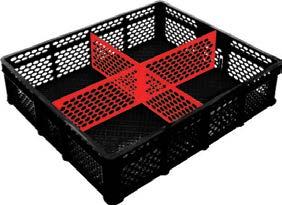






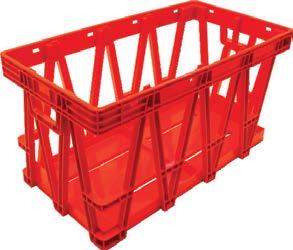

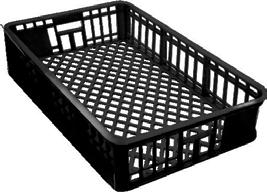

58 ProAgri Africa 98 Crates Crates Crates SPACE SAVER LIVE BIRD CRATE SQUARE FOOT BATH CLASSIC EGG CRATE CLASSIC FREEZER CRATE REVERSE STACK EGG CRATE Quality Poultry Crates CLASSIC LIVE BIRD CRATE CHICK CRATE Tel: 0211-254024 / 254497 | Fax: 260-211-253925 | Email: admin@livestock.co.zm Address: Lusaka Showgrounds, Lusaka, Zambia OFFICIAL DISTRIBUTOR OF POLTEK® PRODUCTS REMOVABLE DIVIDERS CRATE LID Optional extras VIRGIN RED RECYCLED BLACK VIRGIN WHITE RECYCLED BLACK VIRGIN RED RECYCLED BLACK VIRGIN RED RECYCLED BLACK



































 by Tisha Steyn
by Tisha Steyn






































 by Ashleigh Schubert
by Ashleigh Schubert
















 by Sarah M Kunda
by Sarah M Kunda











































































































































































































































































































































































